2017-12-14 - Nº 137
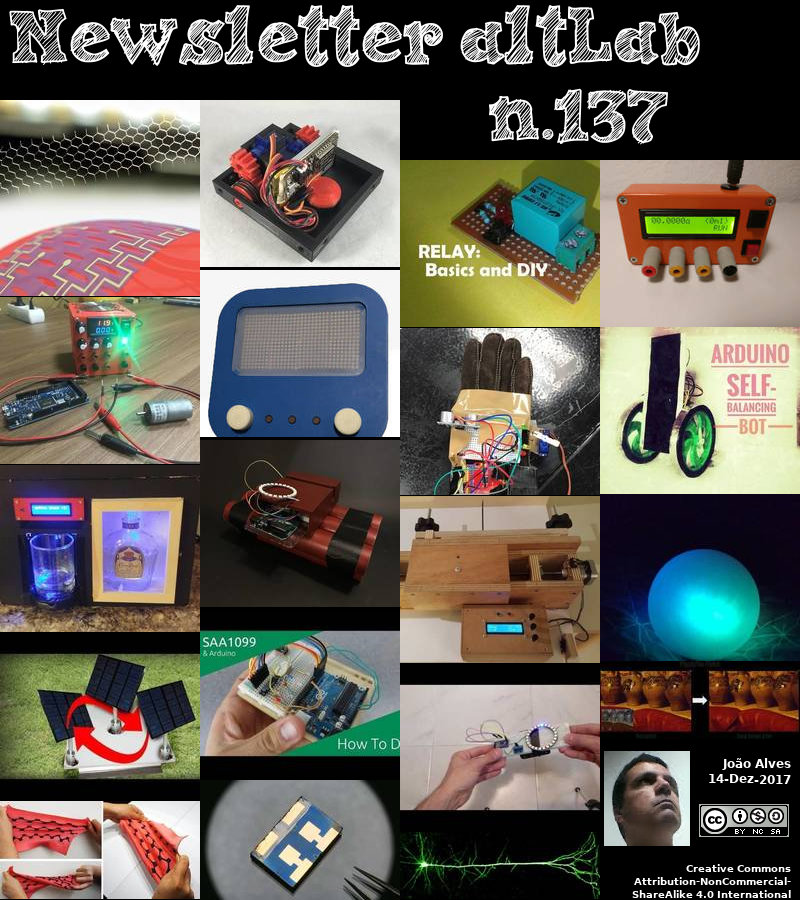
Editorial
Esta é a Newsletter Nº 137 que se apresenta com o mesmo formato que as anteriores. Se gostar da Newsletter partilhe-a!
Todas as Newsletters encontram-se indexadas no link.
Esta Newsletter tem os seguintes tópicos:
Faz hoje anos que nascia, em 1911, Hans von Ohain. Este engenheiro aeronáutico alemão ficou conhecido por ter projectado o primeiro motor a jato operacional. Com apenas 22 anos, concebeu a sua teoria da propulsão a jacto, porque para voar mais rápido, os aviões podiam voar mais alto para a menor resistência do ar, mas lá, as hélices e os motores de pistão funcionavam mal. Ele viu os turbo-reactores como uma solução e fez a sua primeira patente no motor a jato de turbina a gás em 1935, quatro anos depois de Frank Whittle. Em Setembro de 1937, Ohain tinha um modelo de bancada com hidrogénio produzindo um impulso de 250 km. Ele projectou o turbo-jacto HeS3b que alimentou a primeira aeronave experimental, o He178, no seu voo inaugural histórico, a uma velocidade máxima de cerca de 560 km/h, a 27 de Agosto de 1939, perto de Rostock, na Alemanha. O primeiro jacto de Whittle voou mais tarde, em 1941. O seu trabalho continuado no motor de turbina a gás durante a Segunda Guerra Mundial resultou no abandono do conceito de fluxo centrífugo e na adopção do motor do tipo compressor de fluxo axial.
Faz também anos hoje que nascia, em 1922, Nikolay Basov. Este físico soviético, mais conhecido pelo desenvolvimento do maser, o precursor do laser. Em 1955, enquanto trabalhava como aluno de pesquisa com Aleksandr Prokhorov na Academia Soviética de Ciências, ele criou um amplificador de microondas baseado em moléculas de amónia. Os dois cientistas partilharam o Prémio Nobel em 1964 (com o americano Charles Townes, que desenvolveu de forma independente um maser), para pesquisas básicas em electrónica quântica que levaram ao desenvolvimento tanto do maser como do laser. Estes dispositivos produzem feixes monocromáticos, paralelos e coerentes de microondas e luz, respectivamente. Basov passou a desenvolver o princípio do laser e introduziu a ideia de usar semicondutores para atingir a acção do laser.
Esta semana ficámos a saber que uma nova técnica que combina o Galileo e outras constelações de satnav para entregar rapidamente uma precisão de posicionamento menor do que a mão foi comprovada usando sinais de toda a Terra. Desenvolvida por uma equipa de pesquisa espanhola com a ESA, esta técnica de Posicionamento Rápido de Pontos Rápidos ou Fast-PPP poderia, no futuro, fornecer um posicionamento preciso de 10-20 cm mais rapidamente do que nunca para uma grande variedade de utilizadores, de topógrafos a carros sem motorista.
Ficámos também a saber que a NASA coma ajuda da inteligência artificial descobriu oito planetas a circundar uma estrela distante. O nosso sistema solar agora está empatado para a maioria dos planetas em torno de uma única estrela, com a recente descoberta de um oitavo planeta que gira em torno de Kepler-90, uma estrela parecida com o Sol, a 2,545 anos-luz da Terra. O planeta foi descoberto em dados do Kepler Space Telescope da NASA. O recém-descoberto Kepler-90i - um planeta quente e rochoso que orbita sua estrela uma vez a cada 14,4 dias - foi encontrado usando o sistema de "Machine Learning" da Google. Este sistema baseia-se numa abordagem da inteligência artificial em que os computadores "aprendem". Neste caso, os computadores aprenderam a identificar planetas ao encontrar em casos de dados Kepler onde o telescópio registou sinais de planetas além do nosso sistema solar, conhecidos como exo-planetas.
Na Newsletter desta semana apresentamos diversos projetos de maker. São apresentados igualmente 22 tutoriais da tutorialpoint sob a forma de Ebook sobre diversos temas, como C++, Java, Python, SQL, PHP, CSS, HTML, SAS, Bootstrap, Unix, Android, etc.
 João Alves ([email protected])
João Alves ([email protected])
O conteúdo da Newsletter encontra-se sob a licença  Creative Commons Attribution-NonCommercial-ShareAlike 4.0 International License.
Creative Commons Attribution-NonCommercial-ShareAlike 4.0 International License.
Novidades da Semana
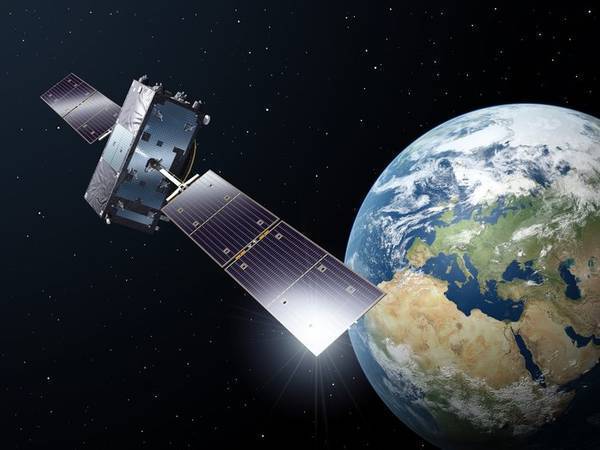
Rapid SATNAV accuracy down to the palm of your hand
"A new technique combining Galileo and other satnav constellations to rapidly deliver smaller than hand-sized positioning accuracy has been proven using signals from all over Earth. Developed by a Spanish research team with ESA, this Fast Precise Point Positioning, or Fast-PPP, technique could in future deliver precise 10–20 cm positioning more quickly than ever before to a wide variety of users, from surveyors to driverless cars. A standard mass-market single-frequency receiver – such as the chip inside your smartphone – typically delivers positioning accuracy of a few metres. The receiver picks up satnav signals from a minimum of four satellites to compute its longitude, latitude and altitude, as well as synchronising its internal clock with the highly accurate atomic clocks on the satellites and within the ground segment. Its overall positioning performance is limited by the combination of errors or uncertainties within the system. An industrial-grade multifrequency receiver will give improved performance but overall positioning accuracy is still constrained, owing to factors such as orbital clock errors, small variations in satellite orbits and – crucially – signal delays due to interference from the ionosphere, the electrically active outer layers of Earth’s atmosphere." [...]

Artificial Intelligence, NASA Data Used to Discover Eighth Planet Circling Distant Star
"Our solar system now is tied for most number of planets around a single star, with the recent discovery of an eighth planet circling Kepler-90, a Sun-like star 2,545 light-years from Earth. The planet was discovered in data from NASA’s Kepler Space Telescope. The newly-discovered Kepler-90i – a sizzling hot, rocky planet that orbits its star once every 14.4 days – was found using machine learning from Google. Machine learning is an approach to artificial intelligence in which computers “learn.” In this case, computers learned to identify planets by finding in Kepler data instances where the telescope recorded signals from planets beyond our solar system, known as exoplanets. NASA will host a Reddit Ask Me Anything at 3 p.m. EST today on this discovery. “Just as we expected, there are exciting discoveries lurking in our archived Kepler data, waiting for the right tool or technology to unearth them,” said Paul Hertz, director of NASA’s Astrophysics Division in Washington." [...]
Outras Notícias

Fully electric cargo ship launched in Guangzhou
"The world's first 2,000-metric-ton all-electric cargo ship has been launched in Guangzhou, the capital of Guangdong province. The ship, manufactured by the Guangzhou Shipyard International Company Ltd, represents a technological breakthrough as it is the first in the world to use lithium battery in a fully powered cargo vessel running in the inland section of the Pearl River. After being charged for two hours, the ship can run 80 kilometers, according to Guangzhou Shipyard International. The company is the mainland's first shipbuilding company listed in Shanghai and Hong Kong, and is wholly owned by CSSC Offshore & Marine Engineering (Group) Company Ltd under the China State Shipbuilding Corporation Group. The ship, 70.5 meters in length, has battery energy of about 2,400 kilowatt hours, or about the same energy of 40 new energy cars. Its highest speed tops out at 12.8 kilometers per hour, and there is zero emission of waste gas pollutants." [...]

Toshiba Electronic Devices & Storage Corporation Launches World’s First 14TB HDD with Conventional Magnetic Recording
"The 14TB models use an innovative 9-disk, helium-sealed design to deliver massive capacity that fits into standard 3.5 inch SATA drive bays. -Toshiba Electronic Devices & Storage Corporation today announced the launch of the MG07ACA Series, the world’s first[1] enterprise 14TB[2] Conventional Magnetic Recording (CMR) HDD. Using a 9-disk, helium-sealed design, the new MG07ACA Series provides the power-efficient capacity and storage density needed by cloud-scale and enterprise storage solution providers to achieve their TCO objectives. “We have raised the bar with the new MG07ACA Series 9-disk helium-sealed design,” said Akitoshi Iwata, Vice President of Storage Products Division, Toshiba Electronic Devices and Storage Corporation. “By utilizing an innovative design, we continue to improve the benefits that high-capacity disk storage can deliver to our broad global customer base.” The MG07ACA Series features both 14TB 9-disk and 12TB 8-disk models. The helium-sealed 3.5-inch[3] mechanical design realizes better storage density and a lower HDD operating power profile than the previous MG06ACA Series for optimal TCO in cloud-scale infrastructures." [...]
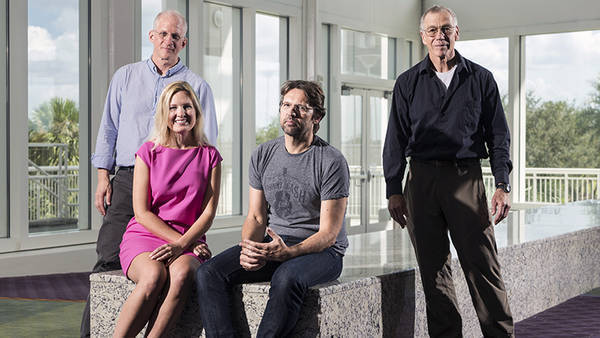
The future is quantum: Microsoft releases free preview of Quantum Development Kit
"Microsoft is releasing a free preview version of its Quantum Development Kit, which includes the Q# programming language, a quantum computing simulator and other resources for people who want to start writing applications for a quantum computer. The Q# programming language was built from the ground up specifically for quantum computing. The Quantum Development Kit, which Microsoft first announced at its Ignite conference in September, is designed for developers who are eager to learn how to program on quantum computers whether or not they are experts in the field of quantum physics. It’s deeply integrated into Visual Studio, Microsoft’s suite of developer tools, so aspects of it will be familiar to people who are already developing applications in other programming languages. And it’s designed to work with a local quantum simulator, also released as part of the kit, that can simulate around 30 logical qubits of quantum computing power using a typical laptop computer. That will allow developers to debug quantum code and test programs on small instances right on their own computers." [...]

STMicroelectronics Acquires Atollic, an Embedded-Systems Company Engineering Integrated Development Environments for Arm® -core-based Microcontrollers
"STMicroelectronics (NYSE: STM) , a global semiconductor leader serving customers across the spectrum of electronics applications, today announced its acquisition of software-development tools specialist Atollic. Atollic is the supplier of TrueSTUDIO ® , a professionally-recognized and highly regarded Integrated Development Environment (IDE) for the embedded development community focusing on Arm® Cortex® -M microcontrollers, like ST’s market-leading STM32 family of 32-bit microcontrollers (MCUs). A top supplier of 32-bit MCUs with a powerful hardware and software ecosystem that accelerate and facilitate application development, STMicroelectronics sees the addition of TrueSTUDIO as further strengthening that offering. Created by an established world-class team of dedicated software tools experts, TrueSTUDIO is recognized as a leading open-source Eclipse-based IDE platform and already supports the STM32 family of Cortex-M based MCUs from ST. The acquisition will allow ST to guide the future evolution of the rich and advanced features of TrueSTUDIO with the STM32 ecosystem to a fully integrated software solution. “The outstanding quality and depth of the STM32 MCU portfolio and its easy-to-use development ecosystem has positioned ST as a leader in embedded systems,” said Michel Buffa, Microcontroller Division General Manager, STMicroelectronics." [...]
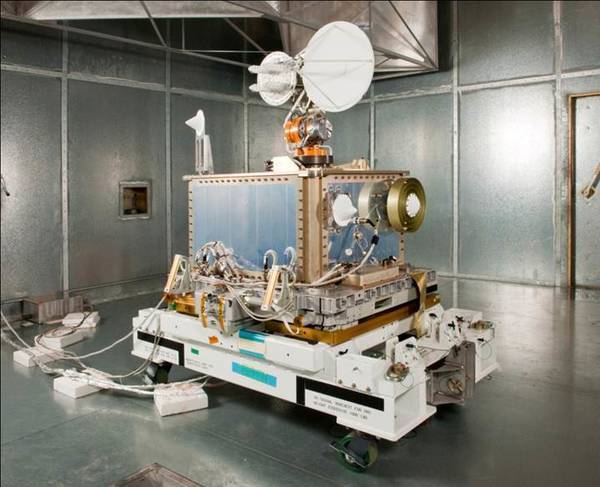
NASA Explores Artificial Intelligence for Space Communications
"NASA spacecraft typically rely on human-controlled radio systems to communicate with Earth. As collection of space data increases, NASA looks to cognitive radio, the infusion of artificial intelligence into space communications networks, to meet demand and increase efficiency. “Modern space communications systems use complex software to support science and exploration missions,” said Janette C. Briones, principal investigator in the cognitive communication project at NASA’s Glenn Research Center in Cleveland, Ohio. “By applying artificial intelligence and machine learning, satellites control these systems seamlessly, making real-time decisions without awaiting instruction.” To understand cognitive radio, it’s easiest to start with ground-based applications. In the U.S., the Federal Communications Commission (FCC) allocates portions of the electromagnetic spectrum used for communications to various users. For example, the FCC allocates spectrum to cell service, satellite radio, Bluetooth, Wi-Fi, etc." [...]

Introducing the New Intel Pentium Silver and Intel Celeron Processors: Performance and Connectivity at Amazing Value
"Intel delivers industry-leading innovations and creates new experiences across its portfolio products. Today, Intel unveils the all-new Intel Pentium® Silver and Intel Celeron® processors. The new Intel Pentium Silver and Intel Celeron processors are based on Intel’s architecture codenamed Gemini Lake, and are engineered for a great balance of performance and connectivity for the things people do every day – working on office documents and spreadsheets, browsing online, enjoying favorite shows and movies, and editing photos – with great battery life. And it can all be performed on a range of devices at an amazing value. Pentium Silver will deliver 58 percent faster1,7 productivity performance compared with a similar 4-year-old PC. The Pentium brand also adds a new extension after offering a range of processor performance for years." [...]
Ciência e Tecnologia
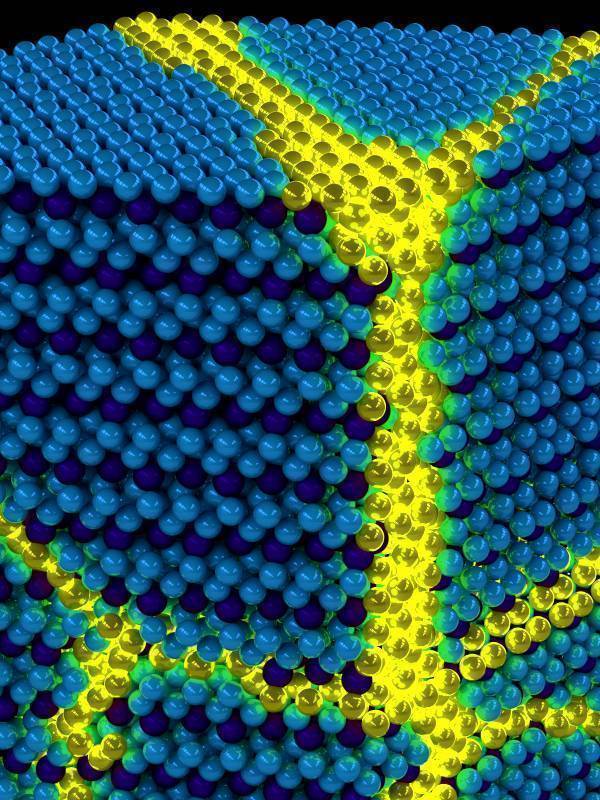
Physicists excited by discovery of new form of matter, excitonium
"Abbamonte group achieves first-ever measurement of excitonium collective modes and first observation of soft plasmon in any material Excitonium has a team of researchers at the University of Illinois at Urbana-Champaign… well… excited! Professor of Physics Peter Abbamonte and graduate students Anshul Kogar and Mindy Rak, with input from colleagues at Illinois, University of California, Berkeley, and University of Amsterdam, have proven the existence of this enigmatic new form of matter, which has perplexed scientists since it was first theorized almost 50 years ago. The team studied non-doped crystals of the oft-analyzed transition metal dichalcogenide titanium diselenide (1T-TiSe2) and reproduced their surprising results five times on different cleaved crystals. University of Amsterdam Professor of Physics Jasper van Wezel provided crucial theoretical interpretation of the experimental results. So what exactly is excitonium? Excitonium is a condensate—it exhibits macroscopic quantum phenomena, like a superconductor, or superfluid, or insulating electronic crystal." [...]
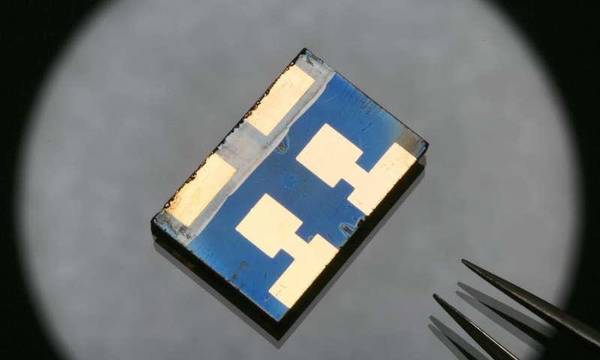
Guanidinium stabilizes perovskite solar cells at 19% efficiency
"With the power-conversion efficiency of silicon solar cells plateauing around 25%, perovskites are now ideally placed to become the market’s next generation of photovoltaics. In particular, organic-inorganic lead halide perovskites offer manufacturing versatility that can potentially translate into much higher efficiency: studies have already shown photovoltaic performances above 20% across different solar cell architectures built with simple and low-cost processes. The main challenge for the perovskite field is not so much efficiency but stability. Unlike silicon cells, perovskites are soft crystalline materials and prone to problems due to decomposition over time. In a commercial context, this puts perovskites on a higher price tag than conventional silicon cells. There have therefore been many efforts in synthesizing perovskite materials that can maintain high efficiency over time." [...]
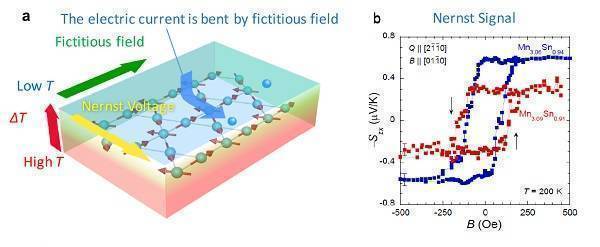
New technology using magnet to generate electricity from heat
"University of Tokyo researchers and their collaborators at RIKEN observed an unexpectedly large thermomagnetic effect, called the anomalous Nernst effect, in an antiferromagnet, a type of magnetic material, for the first time. The study’s findings, demonstrating a new method for regulating thermoelectric performance, provides a novel and potentially useful guideline for the future exploration of thermoelectric materials. The anomalous Nernst effect is the voltage generated spontaneously when a magnetic conductor is exposed to a temperature gradient, even in the absence of a magnetic field. Since its discovery about a century ago, this effect was long assumed as being proportional to the magnetization of the material, thus appearing only in ferromagnets, which have strong magnetization, and was not expected to occur in materials with zero magnetization like antiferromagnets. Strikingly, the joint research team found a large anomalous Nernst effect in manganese-tin alloy Mn3Sn, an antiferromagnetic metal. The widely known anomalous Hall effect is the spontaneous voltage generated across an electric current commonly found in ferromagnets." [...]
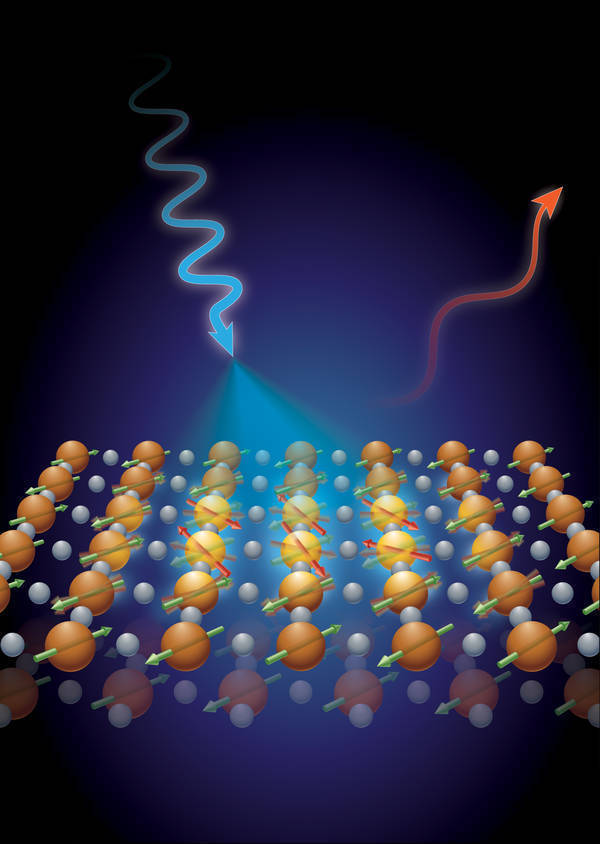
Breaking Electron Waves Provide New Clues to High-Temperature Superconductivity
"Scientists tracked elusive waves of charge and spin that precede and follow the mysterious emergence of superconductivity Superconductors carry electricity with perfect efficiency, unlike the inevitable waste inherent in traditional conductors like copper. But that perfection comes at the price of extreme cold—even so-called high-temperature superconductivity (HTS) only emerges well below zero degrees Fahrenheit. Discovering the ever-elusive mechanism behind HTS could revolutionize everything from regional power grids to wind turbines. Now, a collaboration led by the U.S. Department of Energy’s Brookhaven National Laboratory has discovered a surprising breakdown in the electron interactions that may underpin HTS. The scientists found that as superconductivity vanishes at higher temperatures, powerful waves of electrons begin to curiously uncouple and behave independently—like ocean waves splitting and rippling in different directions. “For the first time, we pinpointed these key electron interactions happening after superconductivity subsides,” said first author and Brookhaven Lab research associate Hu Miao." [...]

Rules for superconductivity mirrored in ‘excitonic insulator’
"Device’s braided qubits could form component of topological quantum computer Rice University physicists dedicated to creating the working components of a fault-tolerant quantum computer have succeeded in creating a previously unseen state of matter. The “topological excitonic insulator” was observed in tests at Rice by an international team from the United States and China. The researchers report their findings this week in the journal Nature Communications. Their device could potentially be used in a topological quantum computer, a type of quantum computer that stores information in quantum particles that are “braided” together like knots that are not easily broken. These stable, braided “topological” quantum bits, or topological qubits, could overcome one of the primary limitations of quantum computing today: Qubits that are nontopological easily “decohere” and lose the information they are storing. Conventional computers use binary data, information that is stored as ones or zeros." [...]

Deep Image Prior
"Deep convolutional networks have become a popular tool for image generation and restoration. Generally, their excellent performance is imputed to their ability to learn realistic image priors from a large number of example images. In this paper, we show that, on the contrary, the structure of a generator network is sufficient to capture a great deal of low-level image statistics prior to any learning. In order to do so, we show that a randomly-initialized neural network can be used as a handcrafted prior with excellent results in standard inverse problems such as denoising, superresolution, and inpainting. Furthermore, the same prior can be used to invert deep neural representations to diagnose them, and to restore images based on flash-no flash input pairs. Apart from its diverse applications, our approach highlights the inductive bias captured by standard generator network architectures." [...]

Reading a neural network’s mind
"Technique illuminates the inner workings of artificial-intelligence systems that process language. Neural networks, which learn to perform computational tasks by analyzing huge sets of training data, have been responsible for the most impressive recent advances in artificial intelligence, including speech-recognition and automatic-translation systems. During training, however, a neural net continually adjusts its internal settings in ways that even its creators can’t interpret. Much recent work in computer science has focused on clever techniques for determining just how neural nets do what they do. In several recent papers, researchers from MIT’s Computer Science and Artificial Intelligence Laboratory (CSAIL) and the Qatar Computing Research Institute have used a recently developed interpretive technique, which had been applied in other areas, to analyze neural networks trained to do machine translation and speech recognition. They find empirical support for some common intuitions about how the networks probably work." [...]

Scientists Create Stretchable Battery Made Entirely Out Of Fabric
"A research team led by faculty at Binghamton University, State University of New York has developed an entirely textile-based, bacteria-powered biobattery that could one day be integrated into wearable electronics. The team, led by Binghamton University Electrical and Computer Engineering Assistant Professor Seokheun Choi, created an entirely textile-based biobattery that can produce maximum power similar to that produced by his previous paper-based microbial fuel cells. Additionally, these textile-based biobatteries exhibit stable electricity-generating capability when tested under repeated stretching and twisting cycles. Choi said that this stretchable, twistable power device could establish a standardized platform for textile-based biobatteries and will be potentially integrated into wearable electronics in the future. “There is a clear and pressing need for flexible and stretchable electronics that can be easily integrated with a wide range of surroundings to collect real-time information,” said Choi. “Those electronics must perform reliably even while intimately used on substrates with complex and curvilinear shapes, like moving body parts or organs." [...]

New Algorithm Repairs Corrupted Digital Images in One Step
"Technique uses the power of artificial neural networks to address several types of flaws and degradations in a single image at once From phone camera snapshots to lifesaving medical scans, digital images play an important role in the way humans communicate information. But digital images are subject to a range of imperfections such as blurriness, grainy noise, missing pixels and color corruption. A group led by a University of Maryland computer scientist has designed a new algorithm that incorporates artificial neural networks to simultaneously apply a wide range of fixes to corrupted digital images. Because the algorithm can be “trained” to recognize what an ideal, uncorrupted image should look like, it is able to address multiple flaws in a single image. The research team, which included members from the University of Bern in Switzerland, tested their algorithm by taking high-quality, uncorrupted images, purposely introducing severe degradations, then using the algorithm to repair the damage. In many cases, the algorithm outperformed competitors’ techniques, very nearly returning the images to their original state." [...]

A ‘holy grail’ of computing hidden in human speech
"Imagine all 30,557 words of Shakespeare’s “Hamlet” being written simultaneously by tens of thousands of people. To maintain the elegance of the prose, there is a necessary interplay between words. Each line has to coordinate with the next to keep the overall meaning of the play intact. For some of the most advanced computer programmers, that imaginary scenario is close to reality. Only instead of writing “Hamlet,” they’re writing software for self-driving cars, updating smartphones, and securing banking systems. “I think about it like trying to build a complete building on sand, without having any strong foundation." [...]
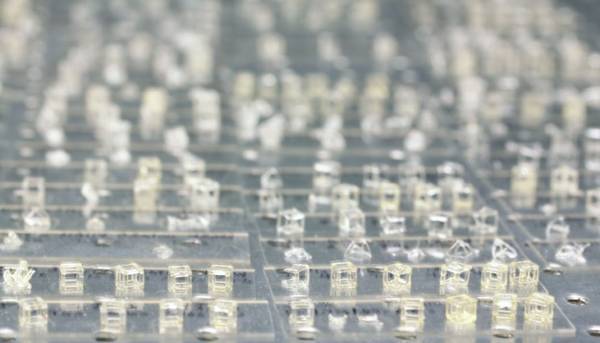
Volumetric 3D printing builds on need for speed
"While additive manufacturing (AM), commonly known as 3D printing, is enabling engineers and scientists to build parts in configurations and designs never before possible, the impact of the technology has been limited by layer-based printing methods, which can take up to hours or days to build three-dimensional parts, depending on their complexity. However, by using laser-generated, hologram-like 3D images flashed into photosensitive resin, researchers at Lawrence Livermore National Laboratory (LLNL), along with collaborators at UC Berkeley (link is external), the University of Rochester (link is external) and the Massachusetts Institute of Technology (link is external) (MIT), have discovered they can build complex 3D parts in a fraction of the time of traditional layer-by-layer printing. The novel approach is called “volumetric” 3D printing, and is described in the journal Science Advances (link is external), published online Dec. 8. “The fact that you can do fully 3D parts all in one step really does overcome an important problem in additive manufacturing,” said LLNL researcher Maxim Shusteff, the paper’s lead author. “We’re trying to print a 3D shape all at the same time. The real aim of this paper was to ask, 'Can we make arbitrary 3D shapes all at once, instead of putting the parts together gradually layer by layer?'" [...]

NUS scientist develops “toolboxes” for quantum cybersecurity
"Novel combination of security proof techniques and protocols help solve the puzzle of high speed quantum key distribution for secure communication A quantum information scientist from the National University of Singapore (NUS) has developed efficient “toolboxes” comprising theoretical tools and protocols for quantifying the security of high-speed quantum communication. Assistant Professor Charles Lim is part of an international team of experimental and theoretical scientists from Duke University, Ohio State University and Oak Ridge National Laboratory that has recently achieved a significant breakthrough in high-rate quantum secure communication. Quantum computers are powerful machines that can break today’s most prevalent encryption technologies in minutes. Crucially, recent progress in quantum computing has indicated that this threat is no longer theoretical but real, and large-scale quantum computers are now becoming a reality. If successfully implemented, these computers could be exploited to decrypt any organisation’s trade secrets, confidential communication, and sensitive data retrospectively or remotely. Quantum key distribution (QKD) is an emerging quantum technology that enables the establishment of secret keys between two or more parties in an untrusted network." [...]
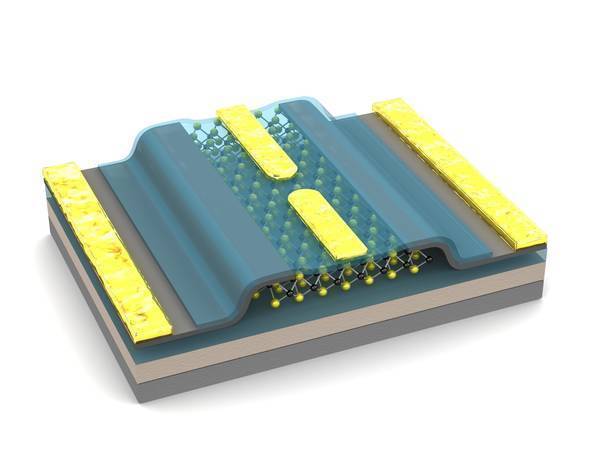
The quantum waltz of electrons hints at the next generation of chips
"A group of spintronics researchers at EPFL is using new materials to reveal more of the many capabilities of electrons. The field of spintronics seeks to tap the quantum properties of “spin,” the term often used to describe one of the fundamental properties of elementary particles – in this case, electrons. This is among the most cutting-edge areas of research in electronics today. Researchers working in the Laboratory of Nanoscale Electronics and Structures (LANES), which is run by Professor Andras Kis, were able to quantify these quantum properties for a category of two-dimensional semiconductors called transition metal dichalcogenides, or TMDCs. Their research projects, which were published recently in ACS Nano and today in Nature Communications, confirm that materials like graphene (C), molybdenite (MoS2) and tungsten diselenide (WSe2) offer, either alone or by combining some of their characteristics, new perspectives for the field of electronics – perspectives that could ultimately lead to smaller chips that generate less heat. “With the methods we’ve recently developed, we’ve shown that it is possible to access the spin in these TMDC materials, quantify it and use it to introduce new functionalities,” says Kis." [...]

Scientists suggested using titanium nitride instead of gold in optoelectronics
"An international team of scientists from Russia, Sweden and the USA suggested replacing gold and silver, which are used in optoelectronic devices, with an inexpensive material of titanium nitride. The results of the study are published in the journal Applied Physics Letters. Titanium nitride has excellent anti-corrosion and thermal stability properties, it is non-toxic and synthesized easily and cheaply, and this is extremely important for its practical application - unlike commonly used gold and silver», — says one of the scientists, Ilya Rasskazov from the University of Illinois at Urbana-Champaign. In order to make optoelectronic devices faster and more accurate, for example, lasers and biosensors for medicine, plasmon resonance is used, in which an electromagnetic wave generated by the action of light spreads all over metal surface. Plasma resonance can be obtained on noble metals, but they do not allow this effect to be obtained in the telecommunications wavelength range, which is used in most of the digital technology. «The vast majority of digital technology functions in the telecommunications frequency range, but gold and silver, widely used in the field of plasmonics, don’t provide such an effect», — said Sergei Polyutov, head of the research at SFU." [...]
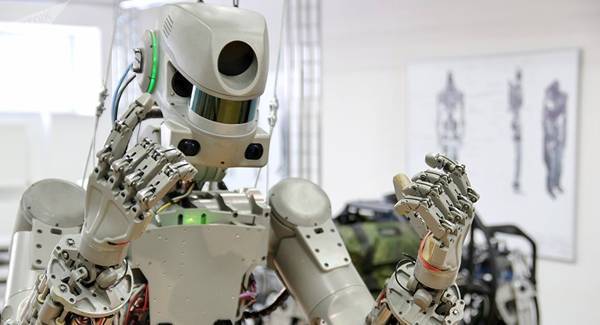
Not Your Grandpa's Robot: Russian Robot 'FEDOR' May Become Self-Learning
"F.E.D.O.R., which stands for Final Experimental Demonstration Object Research is the first Russian humanoid robot, created within the framework of the Foundation of Advanced Studies. The robot is designed to replace humans in high-risk situations for example, in rescue operations and in space. Humanoid robot F.E.D.O.R., may become self-learning in the future. "It is interesting to develop the system from the point of view of self-learning, when it has to adapt, make attempts and look for new solutions to achieve priority tasks, as well as parallel alignment of tasks with switching to a higher priority. That's what we are working on,” according to head of the information technology laboratory at the Blagoveshchensk Pedagogical Institute, Alexander Semochkin. According to the scientist, the tasks for developing software for the robot are well thought out." [...]
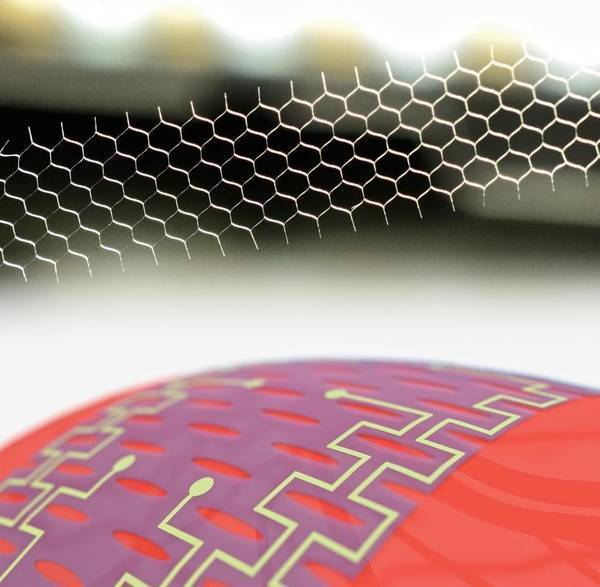
Researchers Create Ultra-stretchable and Deformable Bioprobes with Kirigami Designs
"Researchers from the Department of Electrical and Electronic Information Engineering and the Electronics-Inspired Interdisciplinary Research Institute (EIIRIS) at Toyohashi University of Technology have created an ultra-stretchable bioprobe using Kirigami designs. The Kirigami-based bioprobe allows the user to follow the shape of spherical and large deformable biological samples such as brain and heart tissues. Furthermore, its low strain-force characteristic minimizes the force induced on organs, thus enabling minimally invasive biological signal recording. The results of their research have been published in the December 8th issue of Advanced Healthcare Materials. High stretchability and deformability are potential properties to boost the applications of flexible film electronics including actuators, sensors and energy harvesters. Particularly, they have significant potential for applications related to 3D soft biological samples such as tissues and organs that display large and fast changes in their surface area and volume (for instance - a beating heart)." [...]
New silicon structure opens the gate to quantum computers
"In a major step toward making a quantum computer using everyday materials, a team led by researchers at Princeton University has constructed a key piece of silicon hardware capable of controlling quantum behavior between two electrons with extremely high precision. The study was published Dec. 7 in the journal Science. The team constructed a gate that controls interactions between the electrons in a way that allows them to act as the quantum bits of information, or qubits, necessary for quantum computing. The demonstration of this nearly error-free, two-qubit gate is an important early step in building a more complex quantum computing device from silicon, the same material used in conventional computers and smartphones. “We knew we needed to get this experiment to work if silicon-based technology was going to have a future in terms of scaling up and building a quantum computer,” said Jason Petta, a professor of physics at Princeton University. “The creation of this high-fidelity two-qubit gate opens the door to larger scale experiments.” Silicon-based devices are likely to be less expensive and easier to manufacture than other technologies for achieving a quantum computer." [...]
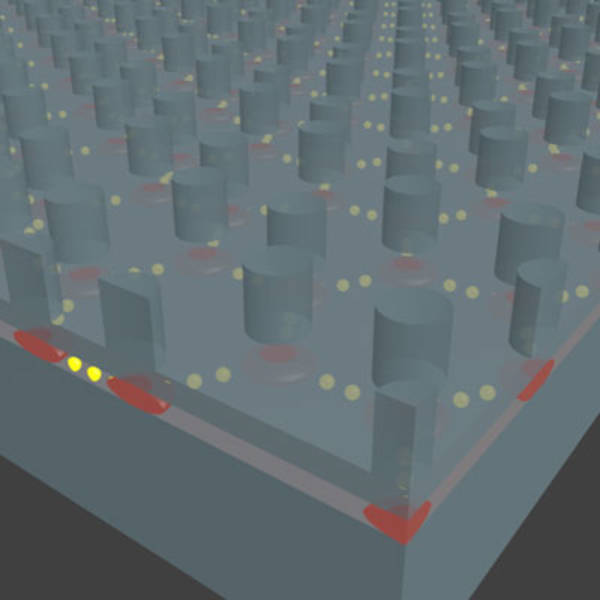
Columbia Engineers Create Artificial Graphene in a Nanofabricated Semiconductor Structure
"Researchers are the first to observe the electronic structure of graphene in an engineered semiconductor; finding could lead to progress in advanced optoelectronics and data processing Researchers at Columbia Engineering, experts at manipulating matter at the nanoscale, have made an important breakthrough in physics and materials science, recently reported in Nature Nanotechnology. Working with colleagues from Princeton and Purdue Universities and Istituto Italiano di Tecnologia,the team has engineered “artificial graphene” by recreating, for the first time, the electronic structure of graphene in a semiconductor device. “This milestone defines a new state-of-the-art in condensed matter science and nanofabrication,” says Aron Pinczuk, professor of applied physics and physics at Columbia Engineering and senior author of the study. “While artificial graphene has been demonstrated in other systems such as optical, molecular, and photonic lattices, these platforms lack the versatility and potential offered by semiconductor processing technologies. Semiconductor artificial graphene devices could be platforms to explore new types of electronic switches, transistors with superior properties, and even, perhaps, new ways of storing information based on exotic quantum mechanical states.” The discovery of graphene in the early 2000s generated tremendous excitement in the physics community not only because it was the first real-world realization of a true two-dimensional material but also because the unique atomic arrangement of the carbon atoms in graphene provided a platform for testing new quantum phenomena that are difficult to observe in conventional materials systems. With its unusual electronic properties—its electrons can travel great distances before they are scattered—graphene is an outstanding conductor." [...]
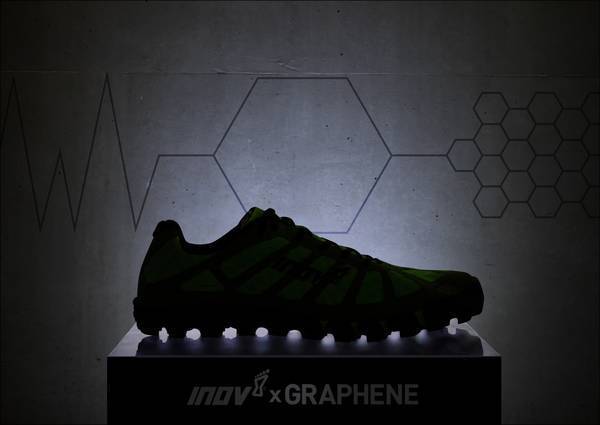
Graphene at the forefront of a sports footwear revolution
"A University of Manchester partnership is launching a revolutionary world-first in the sports footwear market following a unique collaboration with graphene experts. British sportswear brand inov-8 has teamed up with The University of Manchester to become the first-ever company to incorporate graphene into running and fitness shoes. Laboratory tests have shown that the rubber outsoles of these shoes, new to market in 2018, are stronger, more stretchy and more resistant to wear. Graphene is the thinnest material on earth and is 200 times stronger than steel. First isolated at The University of Manchester in 2004, it’s the world’s first two-dimensional material at just one-atom thick and has the potential to revolutionise many areas of technology. Michael Price, inov-8 Product and Marketing Director, said: “Off-road runners and fitness athletes live at the sporting extreme and need the stickiest outsole grip possible to optimize their performance, be that when running on wet trails or working out in sweaty gyms." [...]
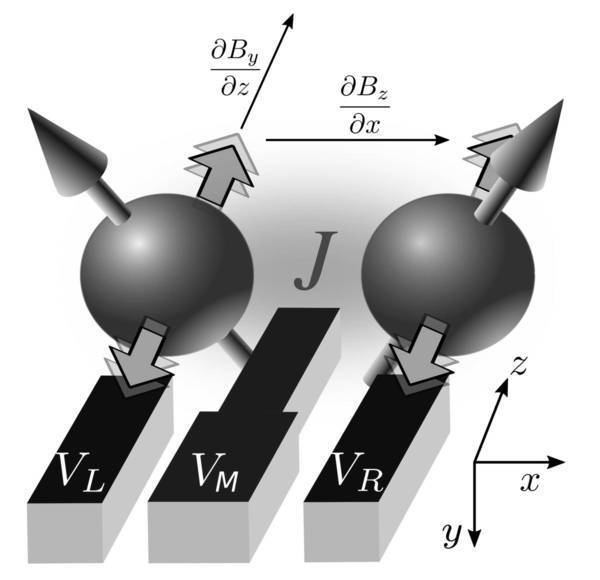
Stable quantum bits
"Physicists from Konstanz, Princeton and Maryland create a stable quantum gate as a basic element for the quantum computer Milestone on the path to the quantum computer: Scientists of the University of Konstanz, Princeton University, and the University of Maryland develop a stable quantum gate for two-quantum bit systems made of silicon. The quantum gate is able to perform all necessary basic operations of the quantum computer. The electron spin of individual electrons in silicon is used as the basic storage unit ("quantum bits"). The research results were published ahead of print in the online edition First Release of the scientific journal Science on 7 December 2017. It will take quite a few years until the first quantum computers will be available in department stores. Even today, however, it has become apparent that the quantum computer will mark a big leap in computer technology." [...]
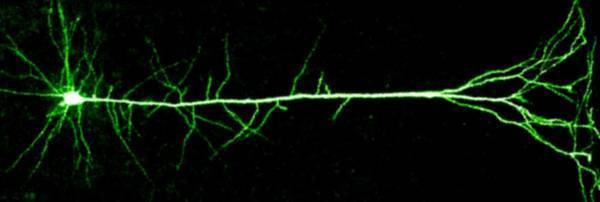
Neurons have the right shape for deep learning
"Deep learning has brought about machines that can ‘see’ the world more like humans can, and recognize language. And while deep learning was inspired by the human brain, the question remains: Does the brain actually learn this way? The answer has the potential to create more powerful artificial intelligence and unlock the mysteries of human intelligence. In a study published in eLife, CIFAR Fellow Blake Richards and his colleagues unveiled an algorithm that simulates how deep learning could work in our brains. The network shows that certain mammalian neurons have the shape and electrical properties that are well-suited for deep learning. Furthermore, it represents a more biologically realistic way of how real brains could do deep learning." [...]
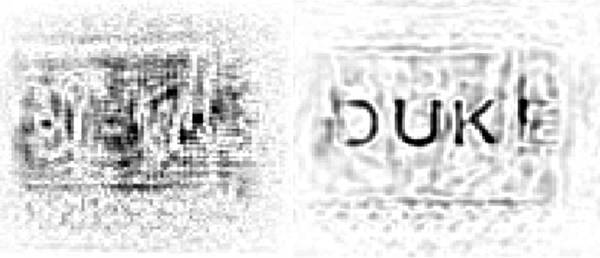
Seeing Through Walls of Unknown Materials
"Removing symmetrical distortions allows successful scans with no prior knowledge of a wall's material Researchers at Duke University have devised a way to see through walls using a narrow band of microwave frequencies without any advance knowledge of what the walls are made out of. Besides having obvious applications in the realm of security, the approach could lead to inexpensive devices to help construction workers easily locate conduits, pipes and wires. The study was published in the journal Optica on Dec. 5, 2017. “Most technologies that can see through walls use a broad range of frequencies, which makes them expensive,” said Daniel Marks, associate research professor of electrical and computer engineering at Duke. “They also don’t have very good resolution. So while they might be fine for seeing a person moving on the other side of a wall, they’re terrible for finding thin conduits or wires.” Current approaches also typically rely on knowing what material the wall is made out of before trying to see through it." [...]

New generation of 3D printing requires almost no post-processing
"In collaboration with three Danish companies, researchers from DTU have now proved that metal 3D prints can be produced with almost no post-processing. 3D printing in metal requires some finishing, because the finished prints have very rough surfaces, which is why the industry primarily uses 3D printing for prototypes and the production of very small series. However, a group of Danish researchers and companies have now developed a new, cost-effective method that produces smooth surfaces and which do not require extensive post-processing. “Early in the year, we and a couple of companies thought out a process which can give 3D-printed metal elements smooth surfaces, making them almost ready for immediate use. We have now successfully completed the first experiments with the process. In other words, we have demonstrated that our idea holds water and can be realized in practice,” says David Bue Pedersen, researcher at DTU Mechanical Engineering." [...]

Autonomous Flying Microrobots (RoboBees)
"Autonomously flying microrobots with potential uses in crop pollination, search and rescue missions, surveillance, as well as high-resolution weather, climate and environmental monitoring Inspired by the biology of a bee, researchers at the Wyss Institute are developing RoboBees, manmade systems that could perform myriad roles in agriculture or disaster relief. A RoboBee measures about half the size of a paper clip, weighs less that one-tenth of a gram, and flies using “artificial muscles” compromised of materials that contract when a voltage is applied. Additional modifications allow some models of RoboBee to transition from swimming underwater to flying, as well as “perch” on surfaces using static electricity. The masterminding of the RoboBee was motivated by the idea to develop autonomous micro-aerial vehicles capable of self-contained, self-directed flight and of achieving coordinated behavior in large groups. To that end, the RoboBee development is broadly divided into three main components: the Body, Brain, and Colony. Body development consists of constructing robotic insects able to fly on their own with the help of a compact and seamlessly integrated power source; brain development is concerned with “smart” sensors and control electronics that mimic the eyes and antennae of a bee, and can sense and respond dynamically to the environment; the Colony’s focus is about coordinating the behavior of many independent robots so they act as an effective unit." [...]
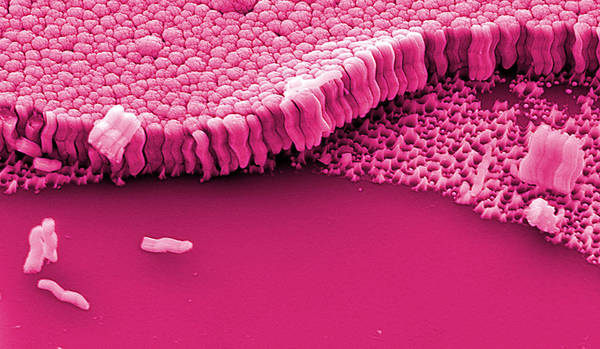
Creating a new kind of metallic glass
"By shrinking samples of metallic glass to nanoscale size, Yale researchers have discovered they can create new materials with potentially new applications. The research, published today in Nature Communications, was conducted as part of Yale’s Center for Research on Interface Structures and Phenomena (CRISP), and led by Judy Cha, the Carol and Douglas Melamed Assistant Professor of Mechanical Engineering & Materials Science, and Jan Schroers, professor of mechanical engineering & materials science. Metallic glasses are a relatively new class of materials made from complex, multicomponent alloys. They have the moldable pliability of plastics, but the strengths of metals. When metallic glasses cool from a liquid to a solid, their atoms settle into a random arrangement and do not crystallize the way traditional metals do. Cha said they discovered a new form of metallic glasses by making metallic-glass rods so small that there is no room for the nuclei — a phenomenon the researchers call “nucleus starvation” — leading to a new crystalline phase." [...]

Device makes power conversion more efficient
"New design could dramatically cut energy waste in electric vehicles, data centers, and the power grid. Power electronics, which do things like modify voltages or convert between direct and alternating current, are everywhere. They’re in the power bricks we use to charge our portable devices; they’re in the battery packs of electric cars; and they’re in the power grid itself, where they mediate between high-voltage transmission lines and the lower voltages of household electrical sockets. Power conversion is intrinsically inefficient: A power converter will never output quite as much power as it takes in. But recently, power converters made from gallium nitride have begun to reach the market, boasting higher efficiencies and smaller sizes than conventional, silicon-based power converters. Commercial gallium nitride power devices can’t handle voltages above about 600 volts, however, which limits their use to household electronics." [...]
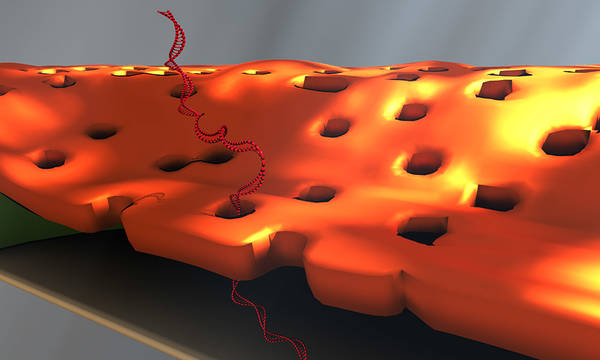
Scientist’s accidental exhale leads to improved DNA detector
"Greg Madejski held his breath as he looked into the microscope, trying to weld two fingernail-sized chips together: a tiny chip containing a nanofilter on top of another chip with a DNA sensor. It was frustrating work. The chips weren’t making good contact with each other. Madejski gently poked at the chips, then peered over the top of the microscope. And exhaled. The sudden waft of warm air swept over the nanofilter, transferring it to the sensor—right on target." [...]
Documentação
A documentação é parte essencial do processo de aprendizagem e a Internet além de artigos interessantes de explorar também tem alguma documentação em formato PDF interessante de ler. Todos os links aqui apresentados são para conteúdo disponibilizado livremente pelo editor do livro.

Data Structures & Algorithms
"Data Structures are the programmatic way of storing data so that data can be used efficiently. Almost every enterprise application uses various types of data structures in one or the other way. This tutorial will give you a great understanding on Data Structures needed to understand the complexity of enterprise level applications and need of algorithms, and data structures. " [...]
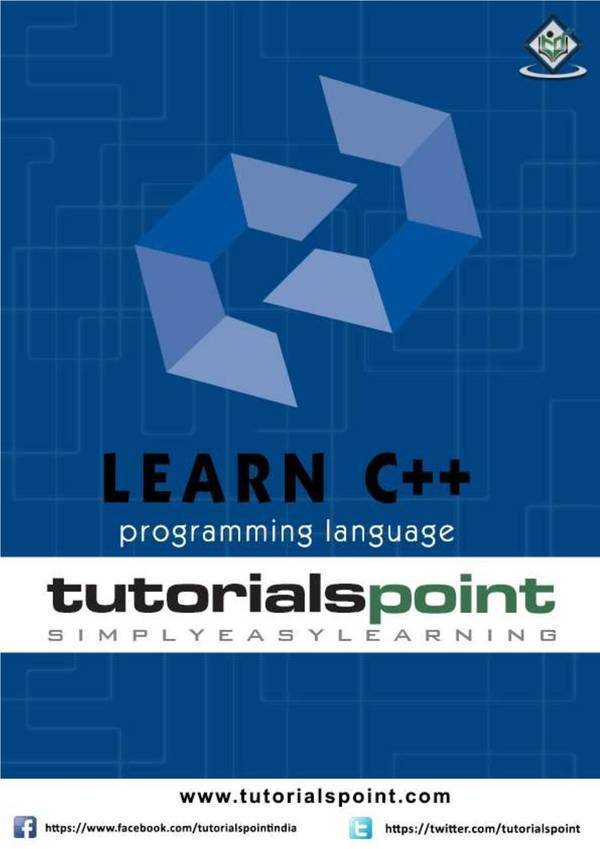
tutorialspoint - Learn C Programming
"C is a general-purpose, procedural, imperative computer programming language developed in 1972 by Dennis M. Ritchie at the Bell Telephone Laboratories to develop the UNIX operating system. C is the most widely used computer language. It keeps fluctuating at number one scale of popularity along with Java programming language, which is also equally popular and most widely used among modern software programmers. " [...]

tutorialspoint - SQL
"SQL is a database computer language designed for the retrieval and management of data in a relational database. SQL stands for Structured Query Language. This tutorial will give you a quick start to SQL. It covers most of the topics required for a basic understanding of SQL and to get a feel of how it works. " [...]

tutorialspoint - DBMS
"Database Management System or DBMS in short refers to the technology of storing and retrieving users’ data with utmost efficiency along with appropriate security measures. DBMS allows its users to create their own databases as per their requirement. These databases are highly configurable and offer a bunch of options. This tutorial explains the basics of DBMS such as its architecture, data models, data schemas, data independence, E-R model, relation model, relational database design, and storage and file structure. In addition, it covers a few advanced topics such as indexing and hashing, transaction and concurrency, and backup and recovery. " [...]

tutorialspoint - Android application development
"Android is an open-source, Linux-based operating system for mobile devices such as smartphones and tablet computers. Android was developed by the Open Handset Alliance, led by Google, and other companies. This tutorial will teach you the basic Android programming and will also take you through some advance concepts related to Android application development. " [...]

tutorialspoint - Computer Fundamentals
"Computer is an advanced electronic device that takes raw data as an input from the user and processes it under the control of a set of instructions (called program), produces a result (output), and saves it for future use. This tutorial explains the foundational concepts of computer hardware, software, operating systems, peripherals, etc. along with how to get the most value and impact from computer technology. " [...]
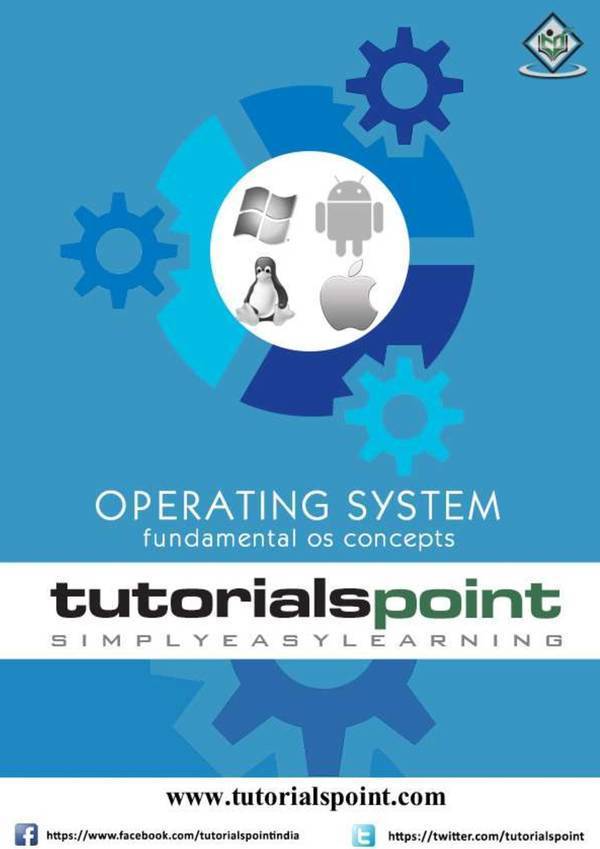
tutorialspoint - Operating System - fundamental OS concepts
"An operating system (OS) is a collection of software that manages computer hardware resources and provides common services for computer programs. The operating system is a vital component of the system software in a computer system. This tutorial will take you through step by step approach while learning Operating System concepts. " [...]

tutorialspoint - Unix computer operating system
"Unix is a computer Operating System which is capable of handling activities from multiple users at the same time. The development of Unix started around 1969 at AT&T Bell Labs by Ken Thompson and Dennis Ritchie. This tutorial gives a very good understanding on Unix. " [...]

tutorialspoint - Java
"Java is a high-level programming language originally developed by Sun Microsystems and released in 1995. Java runs on a variety of platforms, such as Windows, Mac OS, and the various versions of UNIX. This tutorial gives a complete understanding of Java. This reference will take you through simple and practical approaches while learning Java Programming language. " [...]

tutorialspoint - MySQL database management system
"MySQL is the most popular Open Source Relational SQL Database Management System. MySQL is one of the best RDBMS being used for developing various web-based software applications. MySQL is developed, marketed and supported by MySQL AB, which is a Swedish company. This tutorial will give you a quick start to MySQL and make you comfortable with MySQL programming. " [...]
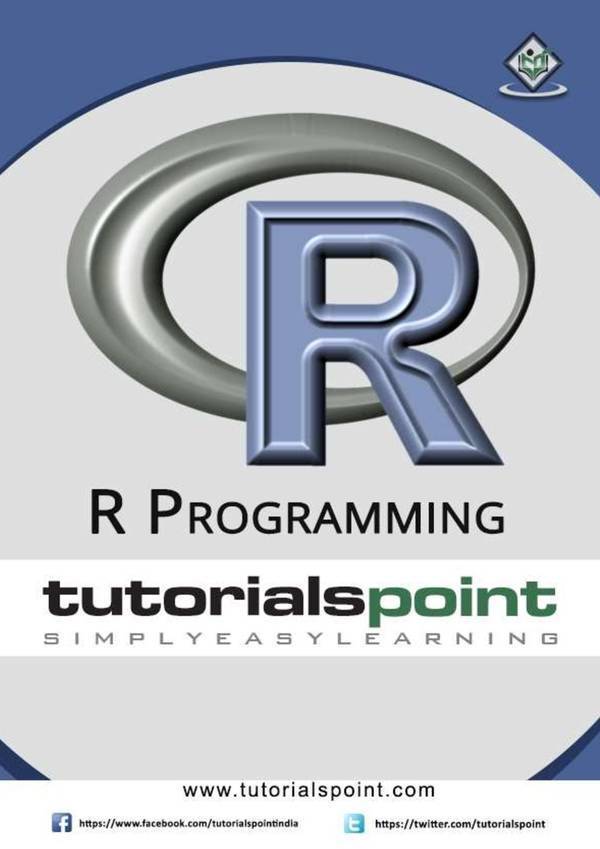
tutorialspoint - R programming
"R is a programming language and software environment for statistical analysis, graphics representation and reporting. R was created by Ross Ihaka and Robert Gentleman at the University of Auckland, New Zealand, and is currently developed by the R Development Core Team. R is freely available under the GNU General Public License, and pre-compiled binary versions are provided for various operating systems like Linux, Windows and Mac. This programming language was named R, based on the first letter of first name of the two R authors (Robert Gentleman and Ross Ihaka), and partly a play on the name of the Bell Labs Language S." [...]

tutorialspoint - CSS Cascade Style Sheets
"CSS is used to control the style of a web document in a simple and easy way. CSS stands for Cascading Style Sheets. This tutorial covers both the versions CSS1 and CSS2 and gives a complete understanding of CSS, starting from its basics to advanced concepts. " [...]

tutorialspoint - PHP hypertext preprocessor
"The PHP Hypertext Preprocessor (PHP) is a programming language that allows web developers to create dynamic content that interacts with databases. PHP is basically used for developing web-based software applications. This tutorial will help you understand the basics of PHP and how to put it in practice. " [...]
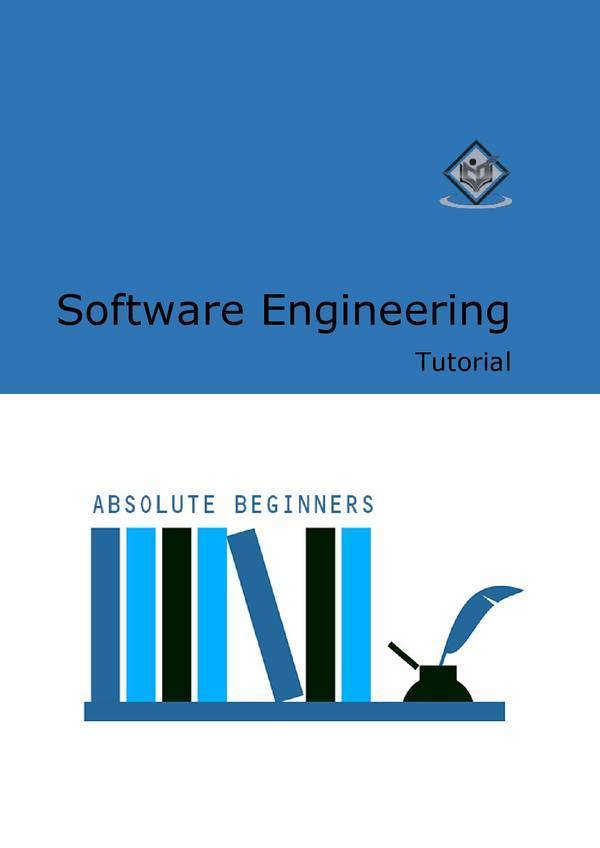
tutorialspoint - Software Engineering Tutorial
"This tutorial provides you the basic understanding of software product, software design and development process, software project management and design complexities. At the end of the tutorial you should be equipped with well understanding of software engineering concepts. " [...]

tutorialspoint - Bootstrap - responsive web development
"Twitter Bootstrap is the most popular front end framework in the recent time. It is sleek, intuitive, and powerful mobile first front-end framework for faster and easier web development. It uses HTML, CSS and Javascript. This tutorial will teach you the basics of Bootstrap Framework using which you can create web projects with ease. The tutorial is divided into sections such as Bootstrap Basic Structure, Bootstrap CSS, Bootstrap Layout Components and Bootstrap Plugins. Each of these sections contain related topics with simple and useful examples." [...]
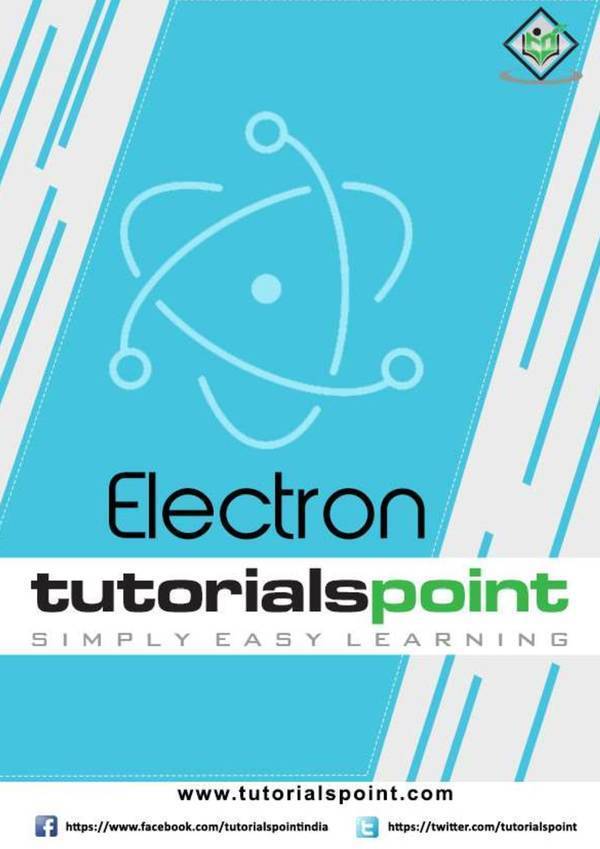
tutorialspoint - electron
"Electron is an open source library developed by GitHub for building cross-platform desktop applications with HTML, CSS, and JavaScript. Electron accomplishes this by combining Chromium and Node.js into a single runtime and apps can be packaged for Mac, Windows, and Linux. " [...]

tutorialspoint - Tableau
"Tableau is a Business Intelligence tool for visually analyzing the data. Users can create and distribute an interactive and shareable dashboard, which depict the trends, variations, and density of the data in the form of graphs and charts. Tableau can connect to files, relational and Big Data sources to acquire and process data. The software allows data blending and real-time collaboration, which makes it very unique. It is used by businesses, academic researchers, and many government organizations for visual data analysis. It is also positioned as a leader Business Intelligence and Analytics Platform in Gartner Magic Quadrant." [...]

tutorialspoint - QlikView
"QlikView is a leading Business Discovery Platform. It is very powerful in visually analyzing the relationships between data. It does in-memory data processing and stores the data in the report itself that it creates. It can read data from numerous sources including files and relational databases. It is used by businesses to get deeper insight by doing advanced analytics on the data they have. It even does data integration by combining data from various sources into one QlikView analysis document." [...]
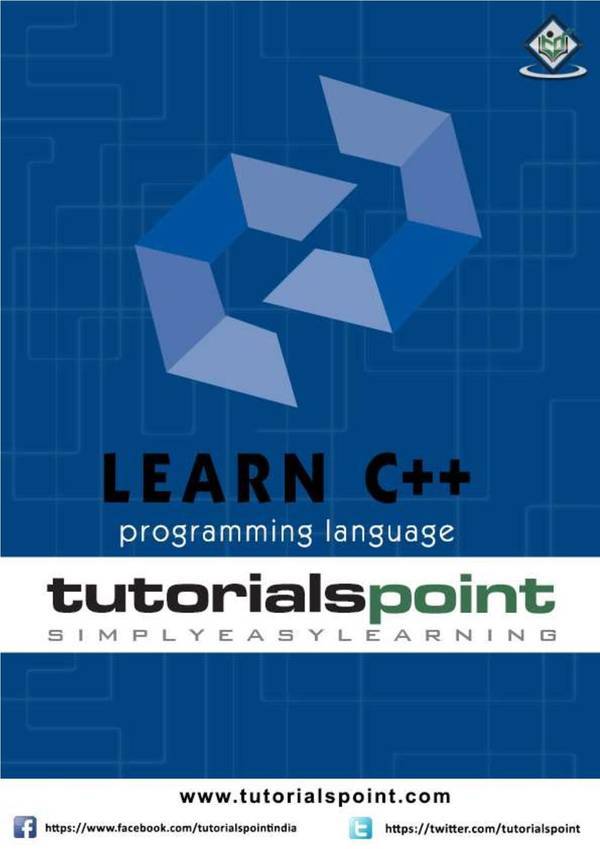
tutorialspoint - Learn Cpp programming language
"C++ is a middle-level programming language developed by Bjarne Stroustrup starting in 1979 at Bell Labs. C++ runs on a variety of platforms, such as Windows, Mac OS, and the various versions of UNIX. This tutorial adopts a simple and practical approach to describe the concepts of C++. " [...]
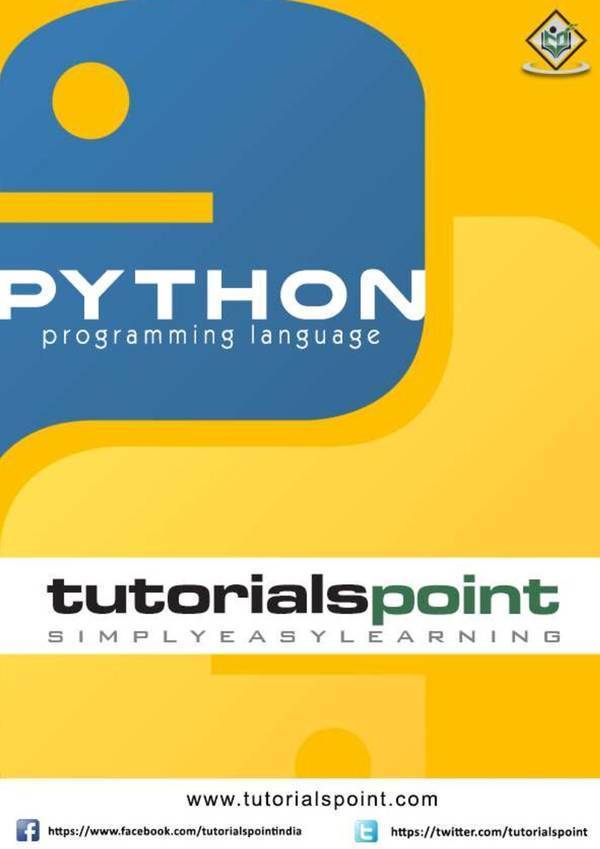
tutorialspoint - Python programming language
"Python is a general-purpose interpreted, interactive, object-oriented, and high-level programming language. It was created by Guido van Rossum during 1985- 1990. Like Perl, Python source code is also available under the GNU General Public License (GPL). This tutorial gives enough understanding on Python programming language. " [...]

tutorialspoint - SAS
"SAS is a leader in business analytics. Through innovative analytics, it caters to business intelligence and data management software and services. SAS transforms data into insight which can give a fresh perspective to business. Unlike other BI tools available in the market, SAS takes an extensive programming approach to data transformation and analysis rather than a drag-drop-connect approach. This makes it stand out from the crowd with enhanced control over data manipulation. SAS has a very large number of components customized for specific industries and data analysis tasks." [...]

tutorialspoint - HTML Hyper Text Markup Language
"HTML stands for Hyper Text Markup Language, which is the most widely used language on Web to develop web pages. HTML was created by Berners-Lee in late 1991 but "HTML 2.0" was the first standard HTML specification which was published in 1995. HTML 4.01 was a major version of HTML and it was published in late 1999. Though HTML 4.01 version is widely used but currently we are having HTML-5 version which is an extension to HTML 4.01, and this version was published in 2012. " [...]
Projetos Maker
Diversos Projetos interessantes.
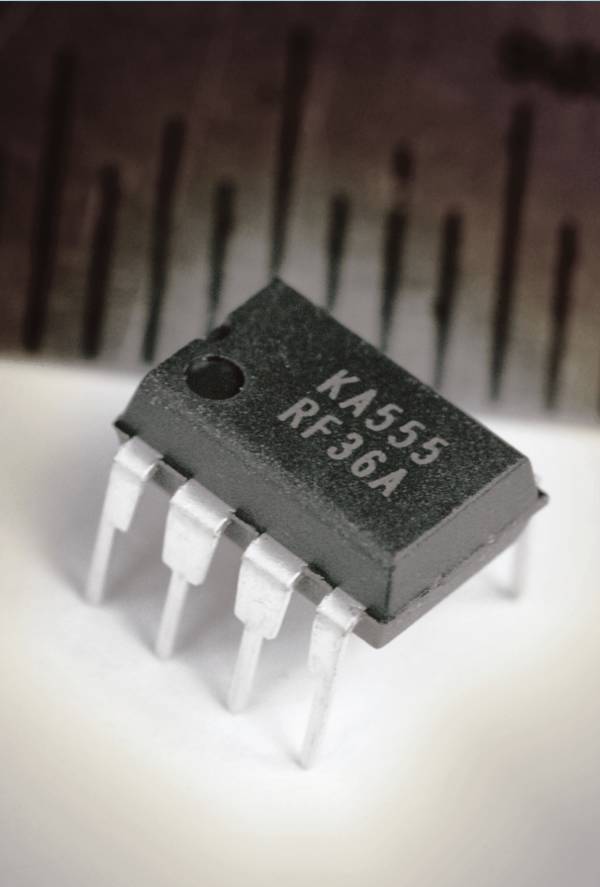
The Biggest Little Chip: An Intro to the Versatile 555 Timer
"Back in 1970, when barely half a dozen corporate seedlings had taken root in the fertile ground of Silicon Valley, a company named Signetics bought an idea from an engineer named Hans Camenzind. It wasn’t a breakthrough concept, just 23 transistors and a bunch of resistors that would function as a programmable timer. The timer would be versatile, stable, and simple, but these virtues paled in comparison with its primary selling point. Using the emerging technology of integrated circuits, Signetics could reproduce the whole thing on a silicon chip. This entailed some handiwork. Camenzind spent weeks using a drafting table and a specially mounted X-Acto knife to scribe his circuit into a large plastic sheet." [...]
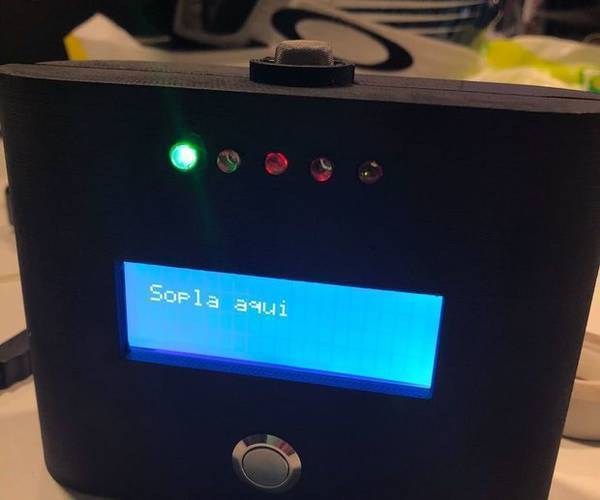
Breathanalyser
"Nowadays, the most of car accidents on the street occurs for reasons that include cases of alcohol consumption. Many families are ruined for that reason. The main vision of this project is to prevent people from drinking and driving and so causing accidents on the road. So this is a prototype version to stop driving under the influence of alcohol. If a driver has been drinking, the sensor will detect the alcohol level in the driver's breath and if it crosses a set threshold an alert will appear and the driver may decide not to drive. This alcoholologist is not a professional breathalyzer and should be used for fun purposes only." [...]

Visual Accelerometer
"This project connects the ADLX345 3-Axis accelerometer to display a location on an 8x8 LED matrix using the MAX7219 LED driver chip. To run this project, simply follow the wiring diagram, and then run the code in your Arduino IDE. I made this project as a stepping stone toward larger projects that involve the ADLX345 accelerometer. This was made as a demonstration of how you can utilize both the chip, and how to display its results in the Serial monitor and physically through the LED matrix. I decided to use the MAX7219 LED Driver to minimize the setup and the number of wires needed. It also happens to take up only 3 pins on the Arduino Uno which is a plus." [...]

+12/-12 Volt Transformer Based Dual Voltage Power Supply
"In this tutorial i will show you how to make simple +12/-12 volt transformer based Dual Voltage Power Supply circuit. You can watch the video which is embedded in this step for construction, parts list, circuit diagram & testing or you can continue reading the post for further details. " [...]
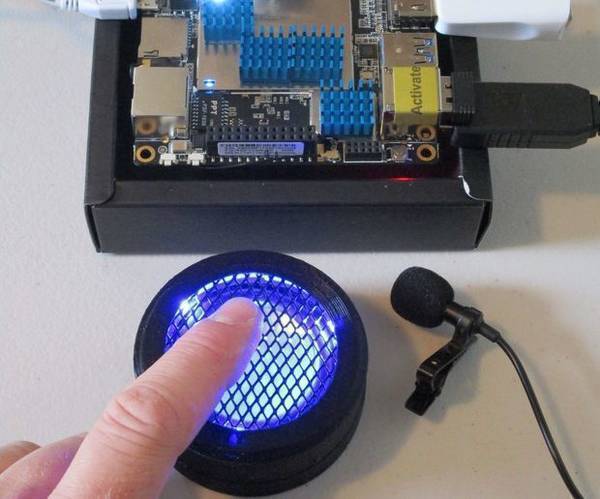
"MicroDot" for LattePanda (or Raspberry Pi)
"The MicroDot is a home-made Alexa 'button' designed to be connected to a LattePanda or a Raspberry Pi, with Alexa Sample App installed. It is a small speaker with LED's and touch/speech activation, and is ideal for use on a desktop or in a car. " [...]
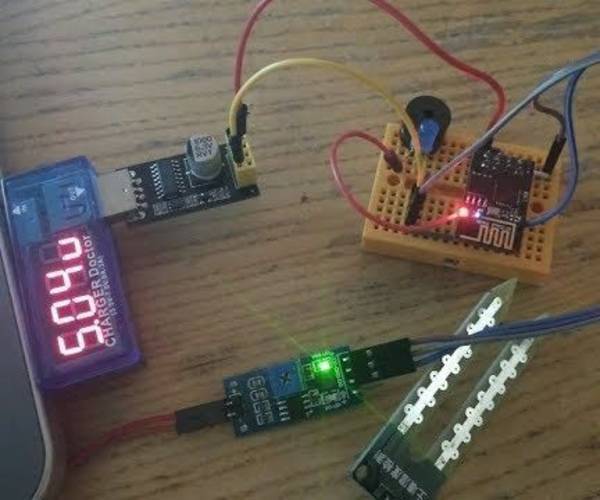
ESP8266/ESP-01 Arduino Powered Leak Detector
"Water is GREAT Stuff right? Not so much when it's forced to leave it's designated home and starts swimming around your home's floor space instead. I know this is an 'after-the-fact' project, but I hope it can help someone else avoid a potential flood and damage. Our hot water heater's expansion tank blew a pinhole leak recently and started spraying water with a fury. Thankfully the closet door it sets behind contained it's aqueous projectile path which minimized the damage. That...and the fact that I actually heard the HISSING noise saved us...THIS TIME." [...]
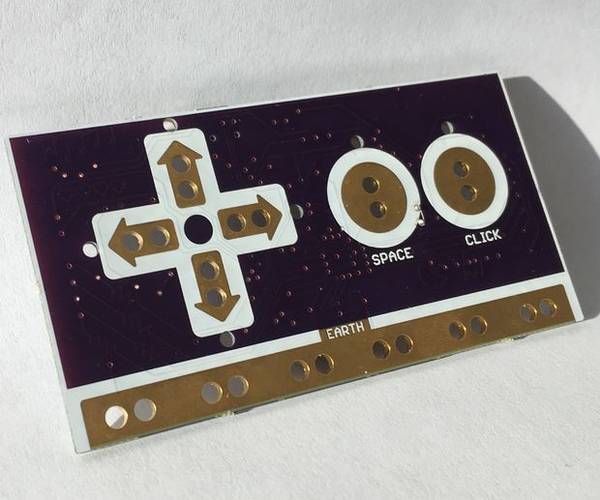
Custom Arduino (Cheaper MakeyMakey)
"A MakeyMakey is an Arduino based board designed and developed by two MIT graduates, Jay Silver and Eric Rosenbaum, in a partnership with SparkFun Electronics. It acts as a keyboard and a mouse, essentially adding a secondary keyboard and mouse to your PC. The real innovation that Silver and Rosenbaum introduced was the ability for "touch sensing". Using incredibly high value pull-up resistors, they were able to use everyday objects as buttons. Many capabilities and ideas for the MakeyMakey are out there, but one of my favorites is the usage for children with disabilities. Those who can't use their fingers well enough to use a standard QWERTY keyboard can use a MakeyMakey as a keyboard emulator." [...]
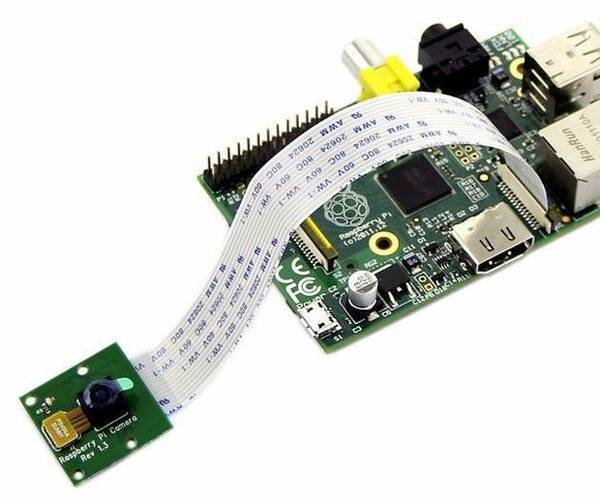
SEER- InternetOfThings Based Intelligent Personal Assistant
"Seer is a device which will play a booster role in the field of smart homes and automation.It is basically an application of internet of things. SEER is a 9-inch hands-free wireless speaker made up of Raspberry Pi 3 model B with an integrated camera you control with your voice.SEER runs on Amazon Web Services and requires aHologram Nova USB modem for high-speed internet connection. To initiate a command, SEER must hear a 'wake word.' The default word is 'SEER', although you can change it through our app. With SEER, a compatible device can play music, answer questions, control the lights, and much more. SECURITY-SEER is a new approach to smart home security, automation, voice control." [...]
Motorized WiFi Controlled Chassis
"Donald Bell of Maker Project Lab (https://makerprojectlab.com) pointed out in his November 29, 2017 update (https://youtu.be/cQzQl97ntpU) that the "Lady Buggy" chassis (https://www.instructables.com/id/Lady-Buggy/) could be used as a generic platform. He must of somehow seen my "projects todo" list... Motorized WiFi Chassis is a simple WiFi controlled motorized open chassis generic platform that uses an Adafruit Feather Huzzah ESP8266 for communication and control, and two continuous rotation servos plus a lithium ion battery for movement. The chassis contains 8 6mm by 1 threaded mounting points to mount, well, more to come on that. I've included the source code in the form of an Arduino sketch for the Adafruit Feather Huzzah ESP8266 if you wish to modify it. Also, you will need soldering skills and soldering equipment, wire, and all parts listed in the first step, plus an Arduino IDE with appropriate libraries installed in order to complete Motorized WiFi Chassis. As usual, I probably forgot a file or two or who knows what else, so if you have any questions, please do not hesitate to ask as I do make mistakes in plenty." [...]

Minesweeper
"For our CPE 133 final project, Chase and I decided to create a Minesweeper game that utilized button and switch input from a Basys-3 board as well as VHDL code. A better name for the game could very well be Russian Roulette, however we wanted to go with a more family friendly name. The game involves the user to press the middle button on the Basys board to randomly assign one of the 16 switches to be active with a bomb. Two players then take turns flipping up switches, one at a time, until one of the players flips the switch with the bomb. When that happens, the seven segment display alerts the players that that player has just lost the game. " [...]

DTMF Controlled Car. No Mobile Phones Required
"Robots and Robo cars are essentially the new day toys for both tech enthusiasts and scientists round the globe. they find applications every where. Here in this tutorial i will explain you how to make a DTMF controlled Robotic Car using arduino and SIM800 module. There are 100 tutorials out there who help in making DTMF robots, what makes this different is that this one uses SIM800 module to do the decoding directly from call. ie you ca avoid the use of DTMF decoder and a mobile phone to provide input. all you have to do is connect modules, load the sketch and your car ready to run." [...]

Mastermind With an 8x8 RGB LED Matrix
"Required parts: Basys3 FPGA 8x8 RGB LED Matrix by GEEETECH 9V battery 2N3904 transistors (x32) 1K resistor (x32) 100 Ohm resistor (x1) 50 Ohm resistor (x1) The LED Matrix is a common anode matrix with 32 total pins. The common anode means that each row is controlled by just 1 pin while each column is controlled by 3 - one for each color. The controlling for this will be done with the 32 PMOD I/O ports on each end of the board. " [...]

Light Detector Solar Panel With Arduino
"This is a project for those who use solar panels and want to increase the efficiency of them. This project is a scaled down version of what can be achieved with bigger solar panels. " [...]

Make Your Own Crude Cocktail Machine
"In this project I will show you how I combined an Arduino Nano, an LCD, a rotary encoder, three peristaltic pumps with motor drivers, a load cell and a couple pieces of wood to create a crude, but functional Cocktail Machine. Along the way I will demonstrate how peristaltic pumps work and in which way they can interact with the other components in order to pump a precise amount of liquid. Let's get started! " [...]
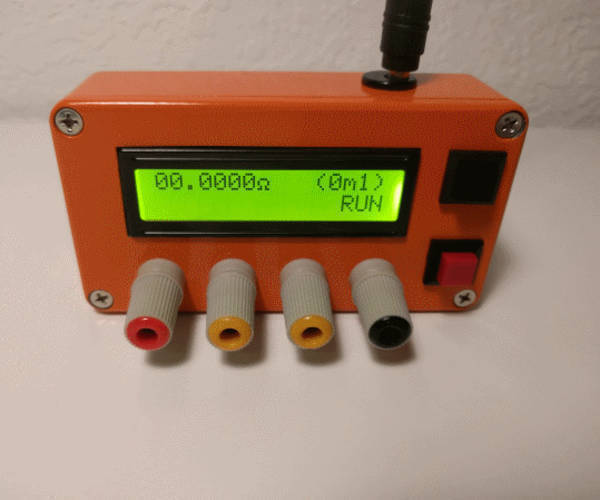
Milliohm Meter
"This is an accurate milliohm meter with a maximum resolution of 0.1mOhm. The design is very simple, the whole assembly can be built in a couple of hours once all the parts are gathered. It is based on a precision current sink and a high-resolution ADC controlled by an Arduino Nano V3. It uses a Kelvin connection with the resistor under test to exclude the resistance of test leads from the measurements. It can be very useful to measure small resistors and the resistance of PCB traces, motor coils, inductance coils, transformer coils, or calculate the length of wires. Measurement ranges: Scale 0m1: 0.1mOhm to 12.9999 Ohm.Scale 1m0: 1mOhm to 129.999 Ohm.Scale 10m: 10mOhm to 1299.99 Ohm." [...]

WiFi Led Fedora Hat (ESP8266 + WS2812b)
"This is a cool good looking led Hat, You can change color and effects of the leds with your smart phone or a computer, also I tried made it as simple and cheap as possible. Also it have a rechargeable battery so you can take this along with you! This is a good gift too!. So Lets Start..." [...]
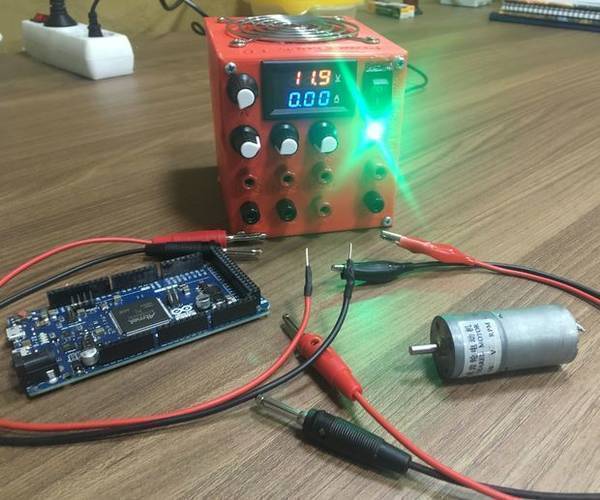
DIY, 3D Printed, Variable Power Supply
"Hi in this instructable I will show you how to make your own variable power supply, which is capable of delivering up to 5A at 12V. " [...]
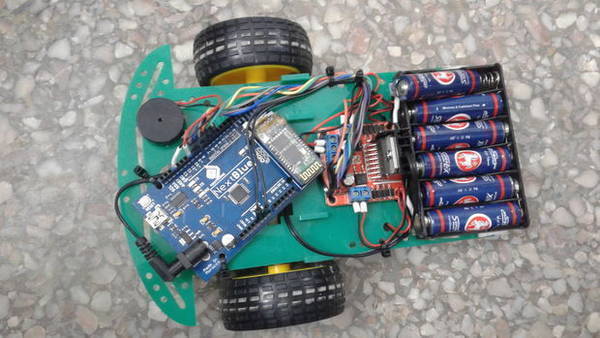
Didactic Robot V1.0
"This didactic robot project includes: Robot chassis with 2 motors + a crazy wheel Arduino Uno Card Bluetouth module HC-06 Module L298 Resistance 1000 ohms and 2000 ohms 1 Buzzer 1 coupler of 6 batteries R6 of 1.5 Volts Electric wire" [...]
Gyroscope Fun With Neopixel Ring
"In this tutorial we'll going to use the MPU6050 gyroscope, a neopixel ring and an arduino to build a device that lights led's corresponding to the angle of inclination. This is a simple and fun project and it's going to be assembled on a breadboard. If you'll follow the steps you'll build what you saw in the video. It's a good tutorial for learning about gyroscope and the neopixel ring. I'm building this tutorial because of the interest i saw on my first instructable here (Gyroscope Led Control With Arduino). In this instructable i've replaced simple led's with a neopixel ring." [...]

Arduino Telesketch With Led Matrix
"Here is just a simple guide to create a telesketch using an Arduino. This design uses an Arduino, two led matrix of 8x32, a Buzzer, two rotary encoders and some buttons. We hope you will learn how to use rotary encoders and led matrix. Also he hope you will have fun following the steps and building your own retro telesketch!! " [...]
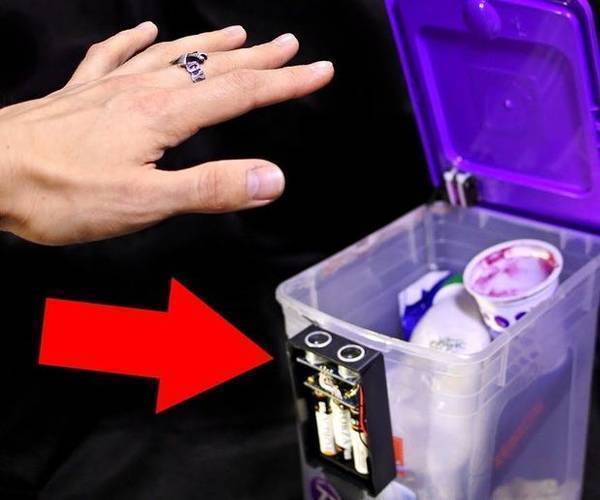
Automatic Trash Bin
"Hi friends! If you have been watching my channel for a long time, then you most likely remember a project about a trash bin with an automatic cover. This project was one of the first in Arduino, one can say my debut. But it had one very big drawback: the system consumed more than 20 milliamps, which made it impossible to work autonomously from batteries. And today, with new knowledge and dozens of projects behind me, I will correct this problem. " [...]
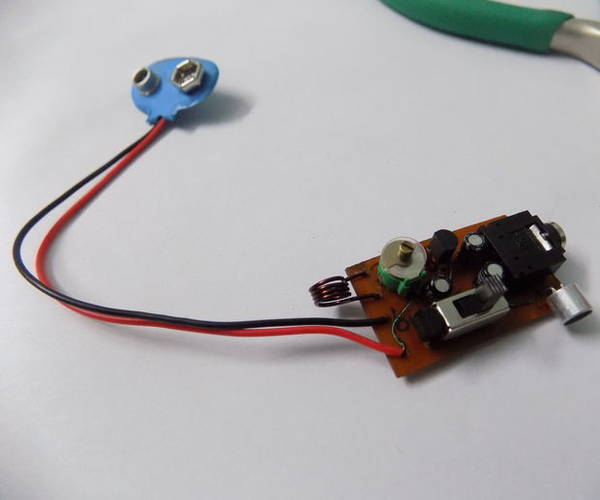
A Mini Multi FM Transmitter - Duo
"Any techie or electronics nut who knows his/her stuff is always mesmerized by FM audio transmissions. The way it works and how basic it actually is, is something worthy of applaud. Even though it was initially implemented in 1933, it is still present in our current world which tells us how important it must have been. For me, as a beginner in electronics, my first and foremost desire was to be able to listen to music wirelessly, and while googling up, I stumbled upon FM transmitters, and it was love on first sight because they could transmit audio to unlimited number or devices unlike bluetooth, and is also long ranged. That isn't the end of the benefits of FM audio transmission but I'm stopping here to prevent straying off topic. So today, I'm going to guide the readers how they can make their own FM transmitters at home without having to worry about complicated stuff." [...]
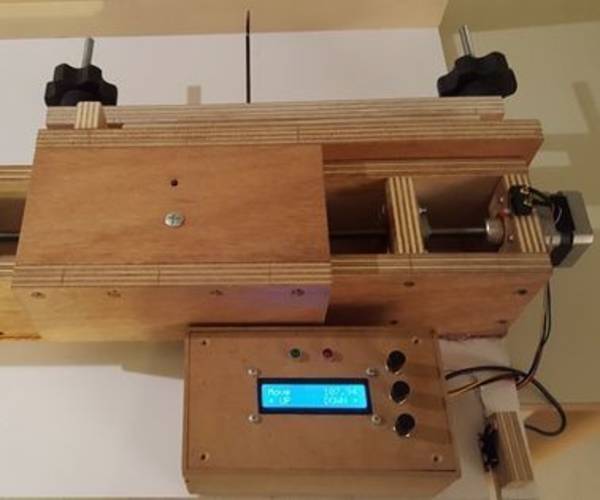
Arduino Controlled Finger Jonter
"Creating finger tines with the table saw PTS10 using a motorized device.The aim was to create a device that allows me to quickly and easily produce finger-tine connections on the table saw. The respective workpiece is moved on a slide by stepper motor to the respective position, in order to then carry out the cut. There are many such devices on the Internet, most of them manually operated (a well-known one is The Woodfather, which I've built before, but I wanted a bit more comfort, and most of all fun developing and building ;-). " [...]

PuzzleBox
"Keeping your valuable items away from prying eyes can be hard sometimes, unless you put it in a big safe or something similar... but who has room for that? Instead, create your own puzzlebox using the components from the MKR IoT Bundle and some cardboard! We can't guarantee the safety of your belongings, but at least it will be a fun deterrent for potential thieves. Of course, we advise you to stash you candy in there... not actual valuables. In a Nutshell In order to open the box, which is held closed with a servo motor, you will have to turn the potentiometers until you get the right combination. The combination can be set through the online app Blynk." [...]

Tiny9: Arduino Self-Balancer
"Tiny9 presents the Arduino Self-Balancer just using an Arduino Nano, a servo, and the Tiny9 LIS2HH12 Module. " [...]

Motoalert
"Its a arduino project prototype, focus on motorbike riders. This product advise with lights to the people that is not respecting the "law of distancie with the vehicles" on you when you ride. If the car is getting closer than beetwen 3m or 1,5m, the red leds of the helmet gets on, and if they go less than 1,5m change to orange leds. This leds are used for warning other cars and prevent an accident. " [...]

High Speed Photography Flash Trigger by Sound or Laser Barrier (Arduino)
"Introduction High-speed photography can be a game of trial and (much) error. When I started experimenting, I would repeat the same action (breaking bottles / popping balloons / dropping objects in water / ...) while my camera was on burst mode. Shooting at 7 frames per second sometimes gave me a few usable results, but it was hard to repeat and be consistent. At the end of a session, you end up with hundreds of pictures you have to sift through... That's why I bought an Arduino to help me get the timing right. In this instructable (my first!) I will show you how to build an Arduino based flash trigger for high speed photography." [...]
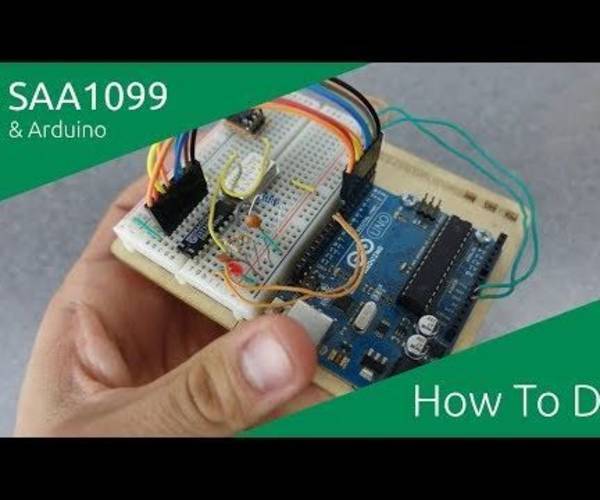
Retro Sound Chip With an Arduino - the SAA1099
"In this instructable, I'll be showing you how to use an Arduino Uno with a vintage sound synthesis chip, to play midi files in square wavy goodness! If you just want a quick overview of what this project does, watch the above video. Otherwise, continue on! " [...]
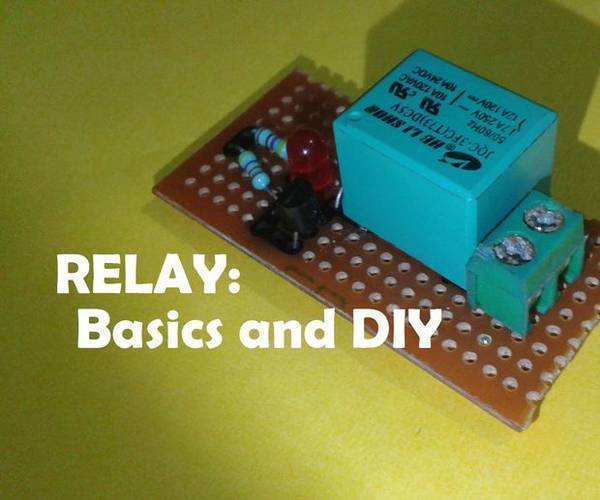
Relay: Basics and DIY
"Hello Friends, This instructable deals with electromagnetic relays. They are electromagnetic switches working based on the principle electromagnetic induction. E-M Relays are used where any circuit with a different voltage level has to be controlled using a low voltage level circuit. Just like controlling a 230 VAC bulb with a 5 V DC output of a microcontroller.Relays play a very crucial role in many categories of electronic circuits. For more information about relays, go through this. " [...]
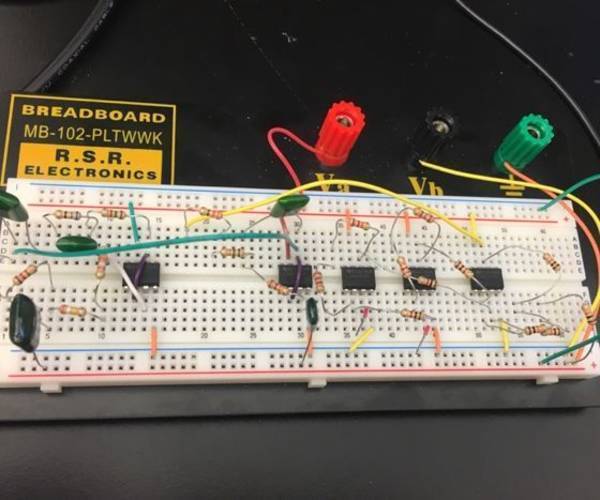
ECG and Heart Rate Digital Monitor
"An electrocardiogram,or ECG, is a very old method of measuring and analyzing heart health. The signal that is read from an ECG can indicate a healthy heart or a range of problems. A reliable and accurate design is important because if the ECG signal shows a deformed waveform or incorrect heartbeat, a person may be misdiagnosed. The goal is to design an ECG circuit that is able to acquire, amplify and filter the ECG signal. Then, convert that signal through an A/D converter into Labview to produce a real-time graph and heartbeat in BPM of the ECG signal. The output waveform should look like this image." [...]
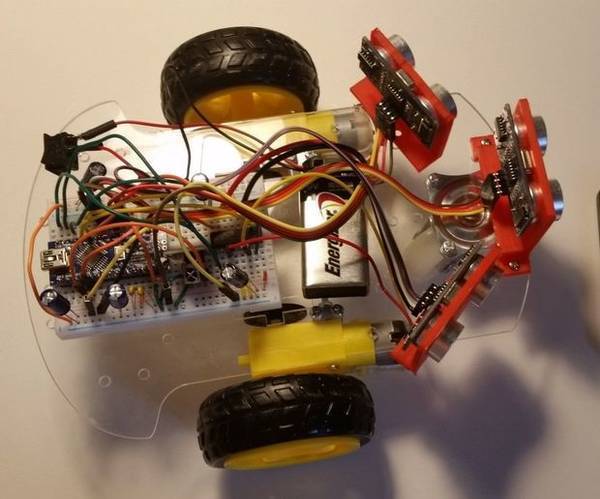
How to Build: Arduino Self-Driving Car
"The Arduino Self-Driven Car is a project comprised by a car chassis, two motorized wheels, one 360 wheel (non-motorized) and a few sensors. It is powered by a 9-volt battery using an Arduino Nano connected to a mini breadboard to control the motors and sensors. When it is turned on, it starts driving straight forward. When it finds an obstacle ahead, it looks for both sides, and turn to the side where it has more free space. If there is no free space ahead or on both sides, it reverses the motors to drive backward. PS: don't mind the dog :)" [...]
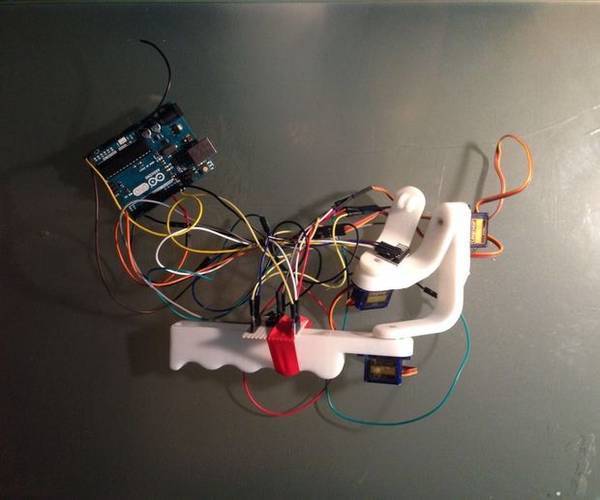
Arduino Camera Stabilizer
"PROJECT DESCRIPTION: This project has been developed by Nil Carrillo and Robert Cabaero, two 3rd year product design engineering students at ELISAVA. Video recording is greatly conditioned by the cameraman's pulse, since it has a direct impact on the quality of the footage. Camera stabilizers have been developed to minimize the impact of vibrations on video footage, and we can find from traditional mechanical stabilizers to modern electronic stabilizers such as the KarmaGrip by GoPro. In this instructable guide you will find the steps to develop an electronic camera stabilizer operating on an Arduino environment. The stabilizer we have designed is thought to stabilize two of the rotation axis automatically, while leaving the flat rotation of the camera under control of the user, who can orient the camera as he pleases through two pushbuttons located on the We will start off listing the necessary components and the software and code that has been used to develop this project. We will continue with a step-by-step explanation of the assembly process to end up extracting a few conclusions about the whole process and the project itself." [...]
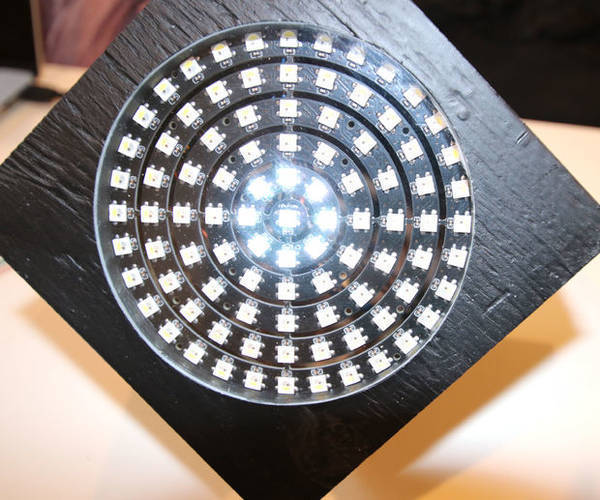
Pulse (Volume Activated LEDs)
"Have you ever wanted to build something with LEDs, but were not sure where to start? This guide will give you some easy to follow steps to design your own volume-visualizing code for addressable LED lights. This is a fun desktop noise meter, rave device, workshop noise warning system, or the like. If you want, feel free to follow my component housing design, but beware that my box is not an entry-level shape and I will not cover how to make it here. However, feel free to get creative or try to copy it from the images. " [...]
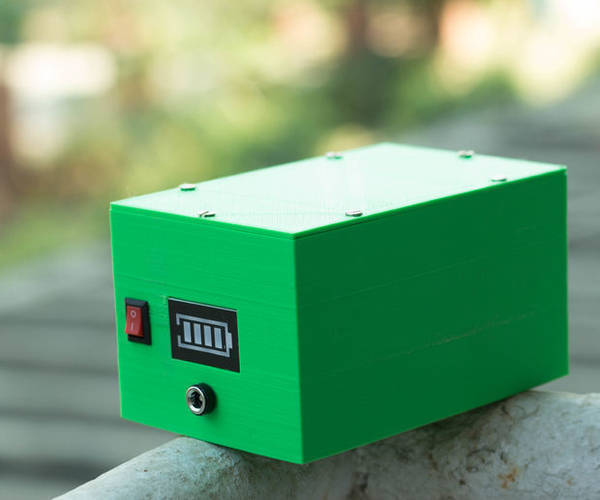
DIY Professional 18650 Battery Pack
"The world is shifting away from fossil fuels and will one day become fully electric.In the present world ,Lithium-ion is the most promising chemistry of all batteries. Most of the battery packs used in Laptops,RC Toys, Drones, Medical devices, Power tools, e-bikes and electric cars (EV) are based on the 18650.It is one of the most mature Li-ion formats available, is produced in high volume and enjoys a low cost per Wh. The 18650 (18mm diameter and 65mm length ) battery is a size classification of lithium-ion batteries.It is the same shape, but a bit larger than a AA battery. AA batteries by comparison are sometimes called 14500 batteries, because they have a 14mm diameter and 50mm height. Earlier I have made a Solar Power Generator which is working really nice till now.But the main problem is its weight, it is really heavy.The main weight of the Solar Generator is due to the heavy lead acid battery inside it.So I decided to make a light and compact 18650 Li Ion Battery Pack. In this Instructable, I will show you, how to make a 18650 battery pack for applications like : Power Bank, Solar Generator, e-Bike, Power wall etc.The fundamental is very simple : Just to combined the number of 18650 cells in series and parallel to make a bigger pack and finally to ensue safety adding a BMS to it." [...]
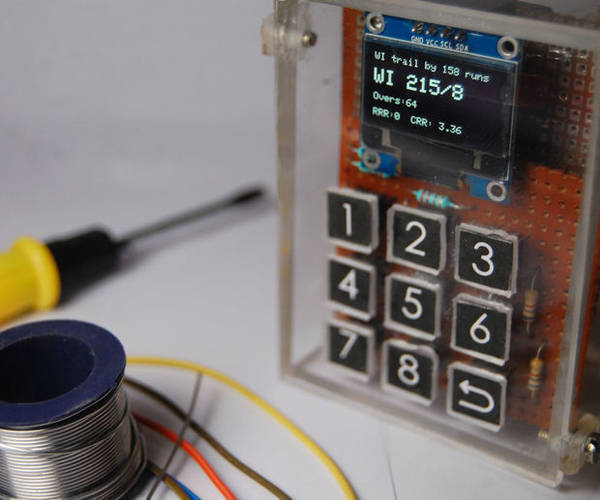
Portable Cricket Scoreboard
"Hello! I was recently introduced to the world of IoT (Internet of Things) as I came across the most popular device in this field, ESP8266. I was amazed by the end number of possibilities which were opened up by this tiny and cheap device. As I am currently new to this, I decided to make a project using it and learn along the way. So, I started searching the internet for projects and ideas. I came across an amazing project called Arduino Cricket Score Ticker by W. A. Smith." [...]

Wearable Heart Rate Badge
"This heart rate badge was created using Adafruit and Bitalino products. It was designed not only to monitor the heartrate of the user, but to also provide real time feedback through the use of different colored LEDs for different ranges of heartrates. What you will need: -Adafruit Website 1 Adafruit FLORA - Wearable electronic platform: Arduino-compatible - v3 4 Adafruit Neopixels - v2 1 spool of conductive thread -Bitalino Components 1 Bitalino ECG sensor 1 Bitalino Arduino Sensor Cable 1 Bitalino 3 pronged lead cable 3 stick-on electrodes 3 female-alligator clip leads (like these) 1 USB to microUSB cable (to upload code) 1 Lithium battery 1 sewing needle 1 tube of adhesive (preferably E6000) 1 pack of red embellishment jewels" [...]
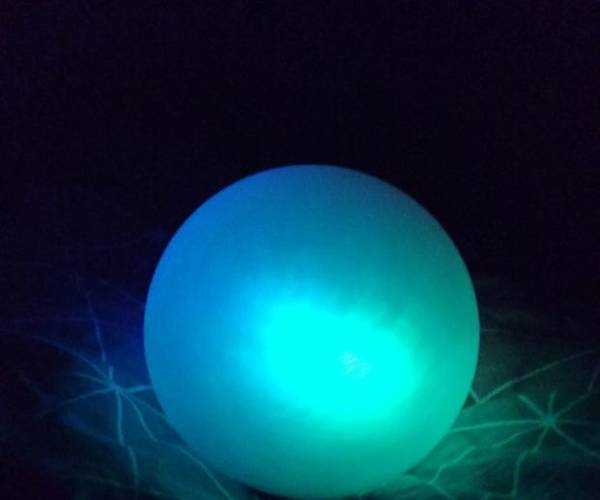
ESP2866 Light Orb With Wireless Charging
"The aim of this project is to make a simple Wi-Fi controlled lamp with wireless charging. The intend is to make somethingawesome with few components. It could for example be used as a gift or wireless night light (or both if you like). " [...]

Pavlov's Cat
"If you ever tried to train a cat, you know how hard it is. Cats are their own masters, but now you have the chance to let the cats do your bidding using this IoT-enabled device. Welcome to Pavlov's Cat Experiment! In this project, you will learn how to teach the cat a valuable lesson of when it is dinner time (and when it isn't) using nothing but the components in the MKR IoT Bundle and some cardboard. And we all know that cats already love cardboard boxes! Every time the cat hears a certain melody, it receive food." [...]
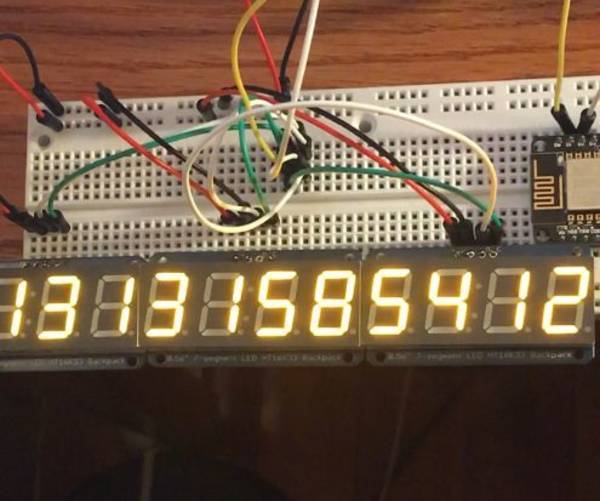
Voyager 1
"In 1977, NASA launched the spacecraft Voyager 1 into the void. Some circumstantial planetary alignment meant that the probe was slingshot past our solar system, set on a course of interstellar exploration. Forty years later, the Voyager 1 mission now marks the furthermost point of humanitys reach into our universe. Still transmitting data back to earth, Voyager 1 pushes the boundaries of human exploration with each passing second. I have a personal fascination for the Voyager missions, and wanted to make a display that captured their spirit. When the display flashes a number, it represents the distance in miles between Voyager 1 and earth, an objective measurement for the possibilities of human imagination." [...]

Worlds Smallest Car With Electronic Stability Control!
"You have one of those tiny little Coke Can Cars? And its controllability sucks? Then here comes the solution: Arduino 2.4GHz "Micro RC" proportional control modification! Features: Proportional control Arduino "Micro RC" conversion with electronic stability control system!2.4GHz Arduino / NRF24L01+ based DIY remote Custom made boards from OSH Park, designed in Eagle Proportional throttle and steering 3.7V LiPo battery MPU-6050 gyro / accelerometer, used for stability control (steering overlay). Gain adjustable via transmitter knob. TB6612FNG dual channel DC motor driver for drive motor and steering 4 Channel Joystick or 2 channel car style transmitter with OLED and integrated PONG game (if you crashed your car) Software and board files available on my GitHub." [...]
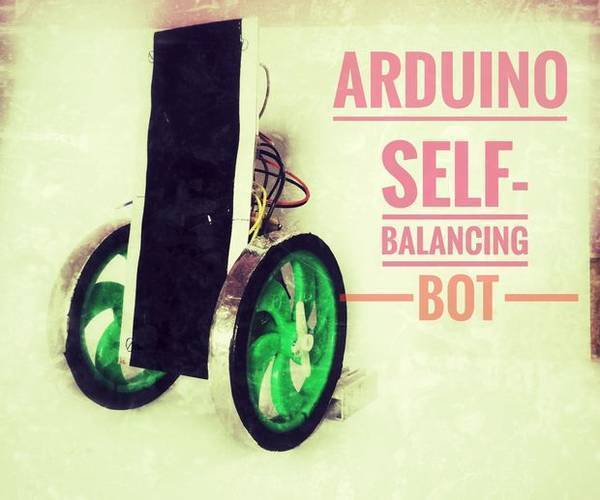
Self Balancing Robot
"Are self-balancing robots old? No! not at all for all the enthusiast available out there.It is amazing to see these bot struggling to balance. Actually, I have already made this bot once but that was without PID. This version has a PID embedded in it with less coding complexity. Part List 1." [...]

Assembly Language For Kids - Mikode
"Learn Assembly Language and teach your kids to blink an LED while playing Snake! So I have a five year old now, and I'd like to someday teach her something useful that I know. Volunteering in Kindergarten class has got me thinking, maybe I could put together a short presentation on Assembly language and binary logic. I know, Kindergarten is way too early to learn binary math, but probably by the time I finish writing the tutorials, she'l be in High School. :) To ease some of the frustration of Assembly and Machine language coding, I wrote a C program that parses and compiles a faux Assembly language that is a little easier to read and understand. The program will execute the binary code and emulate monitor ROM as well as Raspberry Pi GPIO registers." [...]

How to Make a Bluetooth Controlled Simplistic RC Car
"When I was a child, I was always fascinated in RC cars and how they work. When I did take it apart, all I see are chunks of metal placed everywhere. I always wished that there was a simple tutorial covering the basic components that make up an RC car and today I will show you exactly that. I plan to use this RC car for a variety of other projects as well, do refer back to this instructables guide if you have faced any problems. Without further ado, let's begin! " [...]
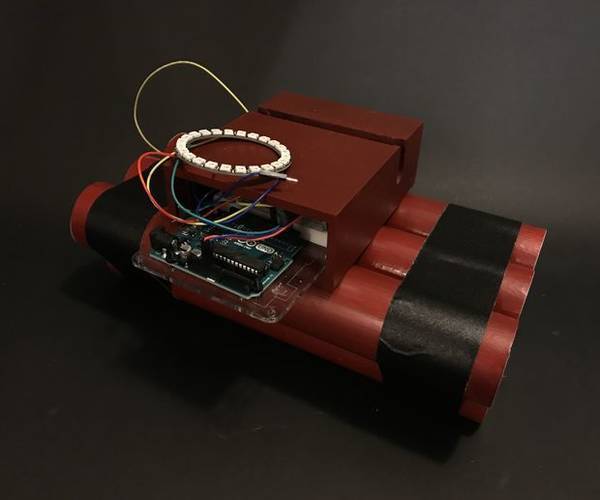
24 - a Ticking Bomb That Asks You to Put Down Your Phone
"24 (formerly known as key) is a timer that encourages the users to put down the phone and focus on other tasks, instead of wasting time on the phone. It was designed to be like a bomb to provide a better outcome of behavior change because of its intimidating looking. " [...]
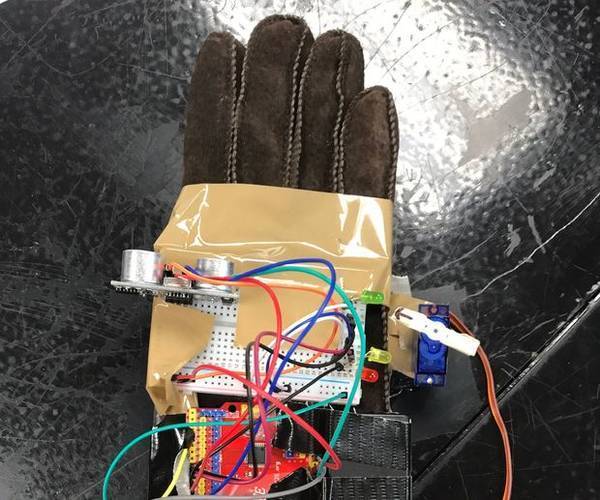
Light Sensor Glove
"In this project we will be attaching an arduino, bread board (with respected parts and wires), and a servo motor to a glove which will be powered by a 9v battery pack. When the glove is pointed at an object a certain light will go on and the servo motor will point to that light, depending on how far away the object is. " [...]
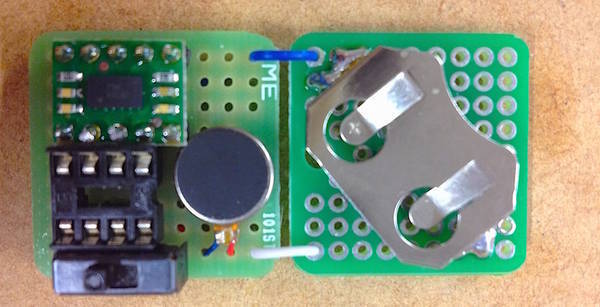
The FitByte: How to Make an ATtiny85 Powered Activity Tracking Wearable
"In this project, we'll build a protoype of a wearable fitness device designed to vibrate when it detects stagnation. This device is low-cost and can help keep you on the move. I love data, especially when you can use it to improve your life. But sometimes less is more. Activity trackers are great at helping you set goals and track improvement but the only feature that I personally need is a reminder to be more active. But who wants to walk around with a dorky band on your wrist when you can be decked out in PCBs that vibrate when you’re lazy?" [...]

Liquor Dispenser
"As you may have guessed by the title this project is a machine that mixes perfect drinks every time because everybody knows alcohol is the cause of... and solution to... all of life's problems, now this dispenser will include an interactive menu on an LCD display, multiple LEDs and a second drink compartment... why? why not. " [...]
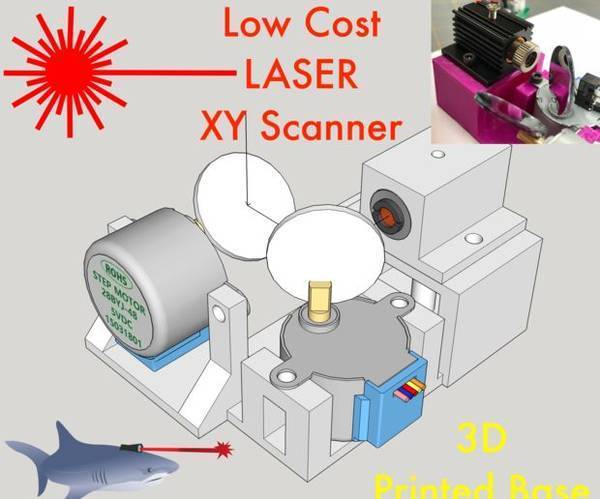
3D Printed Laser XY Scanner - Draw, Cut, Engrave, or Scan
"Laser XY Scanner is an open source stepper motor based scanner. The components used are low cost and very accessible. This type of laser scanner is not extremely fast but it can still be used in a variety of applications. Draw, cut and or point with laser X and Y control. There are many types but the traditional laser scanner is made with mirror galvanometers. These are very expensive and require even more expensive and complex controllers." [...]

Automobile Toy Revival With Esp8266
"I bought this old toy car for $ 1. It has no game pad.So, I fix it with esp8266, to control via website. " [...]

Infrared Controlled Logic Puzzle -- Lights On!
"Blow the cobwebs out your ears with this fun yet challenging logic puzzle with an IR control.. try and get all the lights on! What does it DO? A fun and easy Logic Puzzle! Choose 6 Buttons on your IR remote. 5 of the buttons toggle different pairs/trios of LED's on and off, and one resets all the LED's. If the buttons are hit in the correct order...all the LED's will be on!" [...]
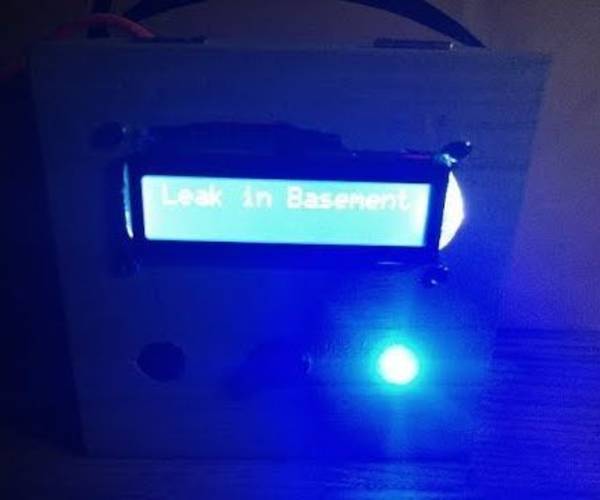
ESP8266/ESP-01 Arduino Powered MQTT Leak Detector & Remote Alarm Receiver
"NO ONE enjoys water/liquid of any kind leaking into places that it just doesn't belong. The worst part of that scenario is that it tends to happen where you currently 'happen not to be'...your basement, a utility closet, maybe even your attic or garage. Setting up a WiFi connected sensor in a potential 'leak-zone', and a remote alarm nearer to you waiting for meaningful alarm messages sent from that sensor might be a GREAT IDEA! MQTT is the key to this project, just as it was in the ESP8266Arduino-MQTT-Memo-Minder project. The only difference is that instead of sending MQTT text messages from an App on your phone, the MQTT messages will be sent from the re-configured code on the ESP8266ESP-01-Arduino-Powered-Leak-Detector. This Instructable merges 2 previous projects, resulting in a VERY useful and adaptable device as such." [...]

Control LED By Clap Using Arduino And Sound Sensor
"We are showing how to use KY-038 Sound Sensor using Arduino. Showing how you can control LED by clap with the help of Arduino & Sound Sensor Showing how to use KY-038 Sound Sensor using Arduino. Also showing how you can control LED by clap with the help of Arduino and Sound Sensor. We have shown only to control LED but by using the same concept you can control any electronic device. " [...]

USB To 12V Boost Converter
"This project provides 12V output from any USB power source, like PC USB port, USB adapter or power banks. LM2577ADJ boost converter IC is the heart of the project. The IC can handle load up to 800mA, it’s advisable to use only 200mA load on output to be on the safe side. The LM2577 are monolithic integrated circuits that provide all of the power and control functions for step-up (boost), fly back, and forward converter switching regulators. The device is available in three different output voltage versions: 12V, 15V, and adjustable. Requiring a minimum number of external components, these regulators are cost effective, and simple to use." [...]
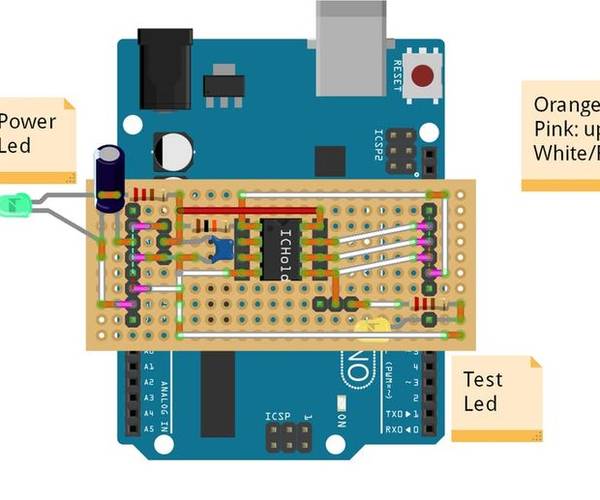
ATtiny Programmer Board (ArduinoUNO As ISP)
"ATtiny13/ATtiny13a/ATtiny25/ATtiny45/ATtiny85 I really like the ATtiny and programming it, so I built a simple board to use Arduino UNO as ISP in a faster way. With the original Arduino UNO, there is a little variant because compatible one have another 5v VCC over RESET pin, Arduino UNO has IOREF instead, but don't worry look at the schema to make the simple change. " [...]
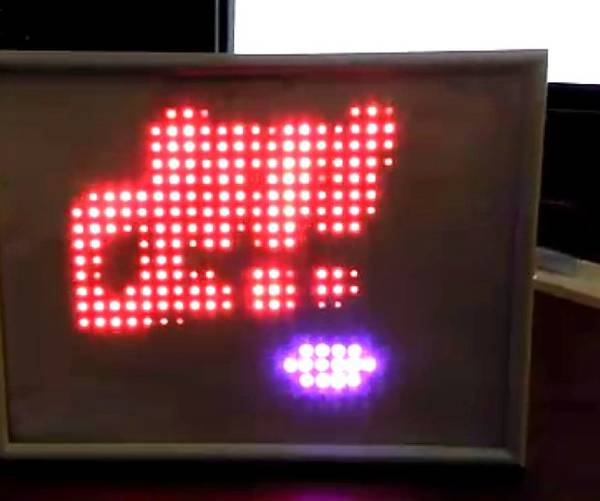
Christmas Frame
"This project was done as a part of the Christmas decorations. It is just a frame which displays Christmas stuff: Static icons (i.e. Christmas tree, snowflake, Santa's hat...). A marquee for text (i.e. Merry Christmas) or wider images. Snow." [...]

Bluetooth Controlled Arduino POV
"Introduction: Persistence of vision refers to the optical illusion that occurs when visual perception of an object does not cease for some time after the rays of light proceeding from it have ceased to enter the eye. The illusion has also been described as "retinal persistence",persistence of impressions" or simply "persistence" and other variations. The working of Arduino POV is based on the principle of persistence of vision. The human brain stores the visual for atleast tp sec . So any change within tp seconds gets unnoticed. Let us consider an example of displaying letter H. Initially all the LEDs of 1st position are switched ON." [...]
That's all Folks!


